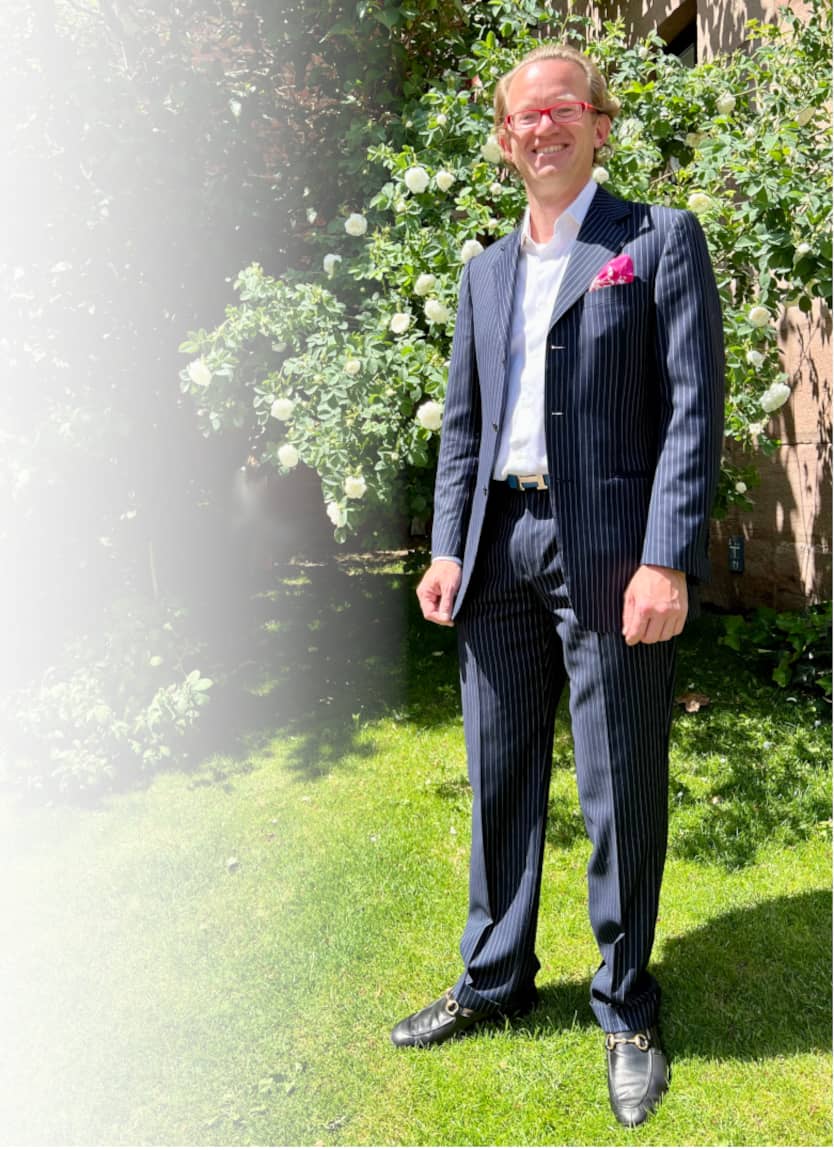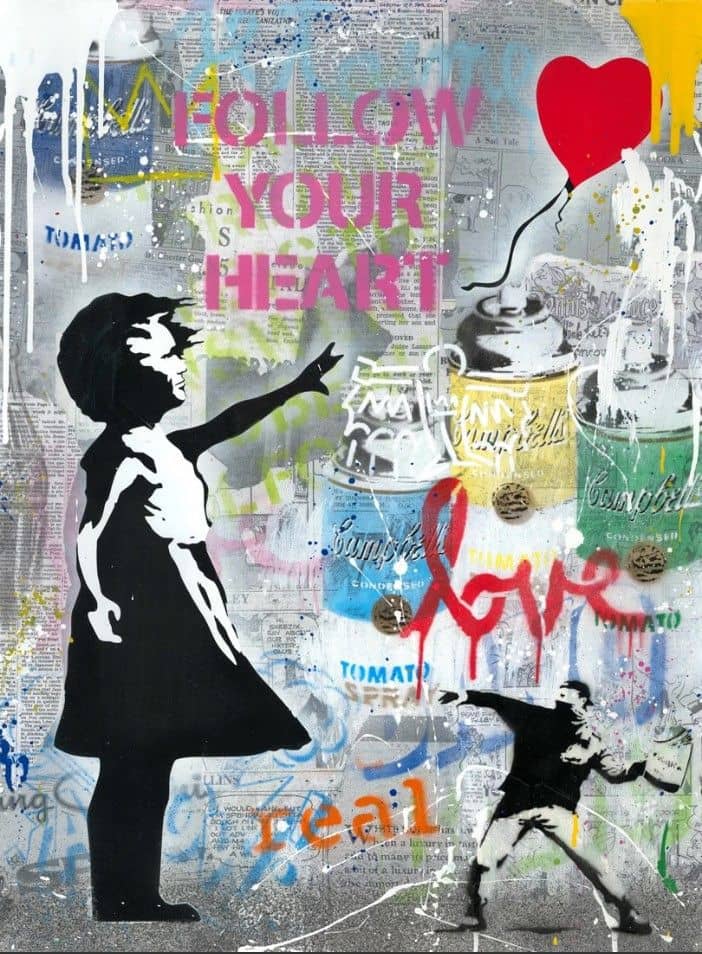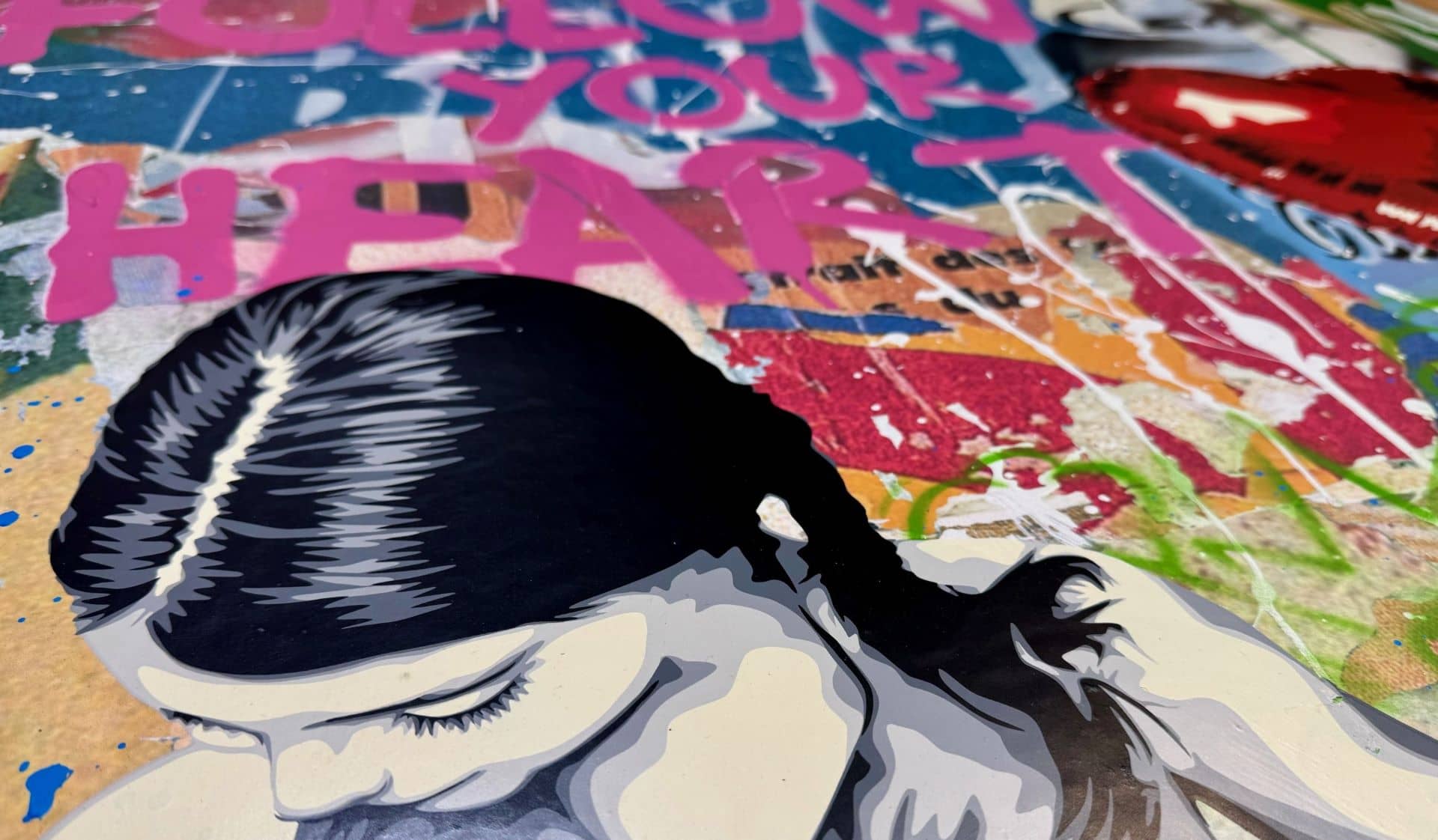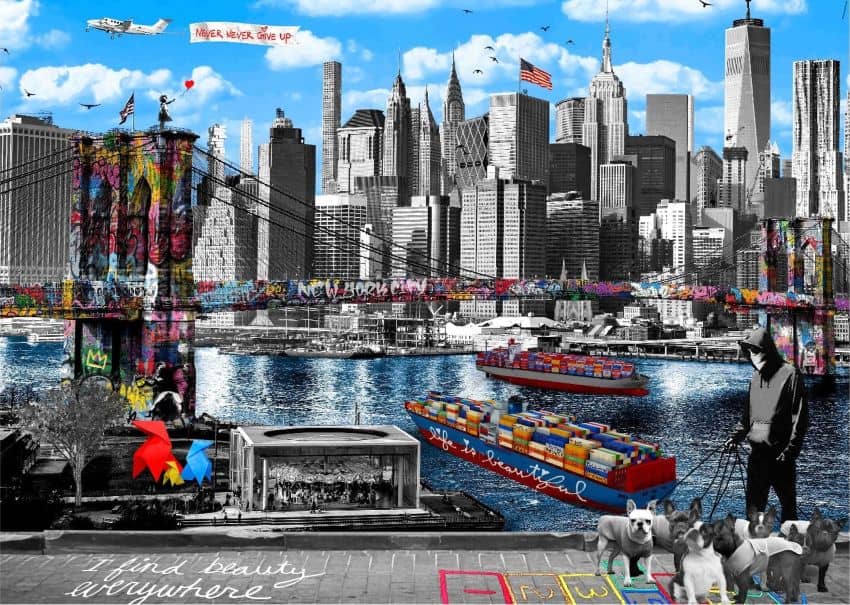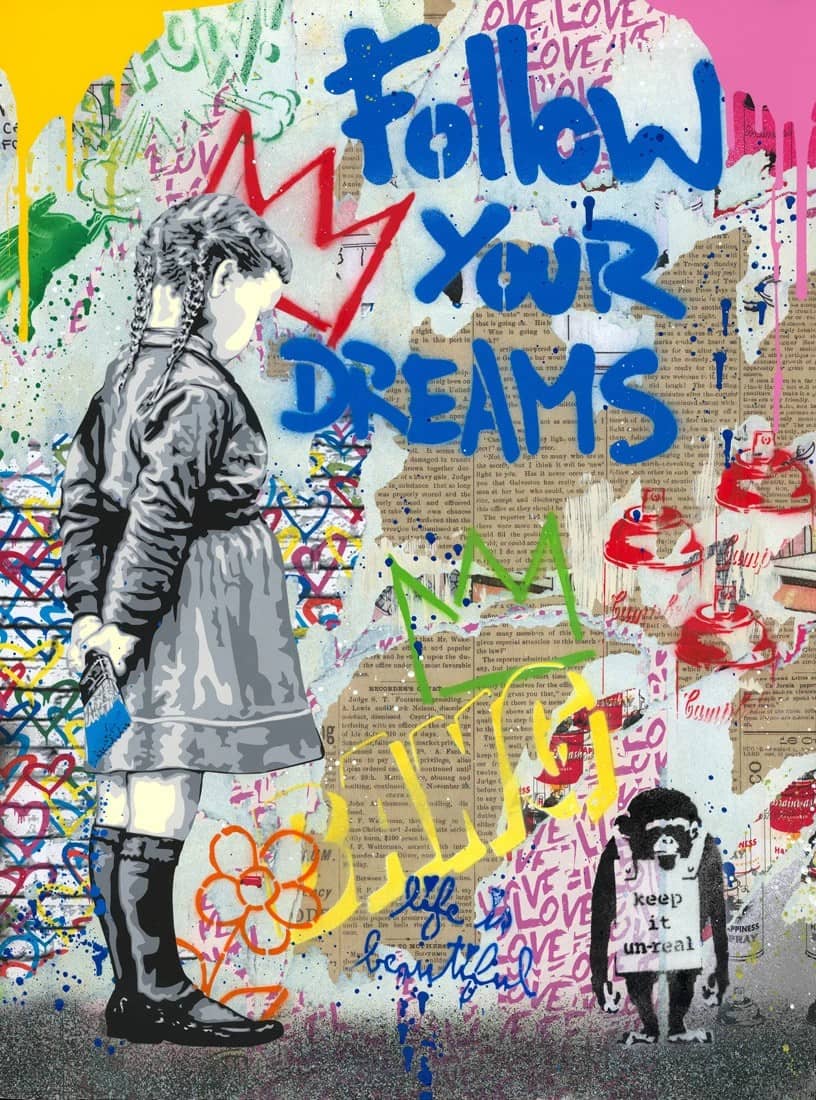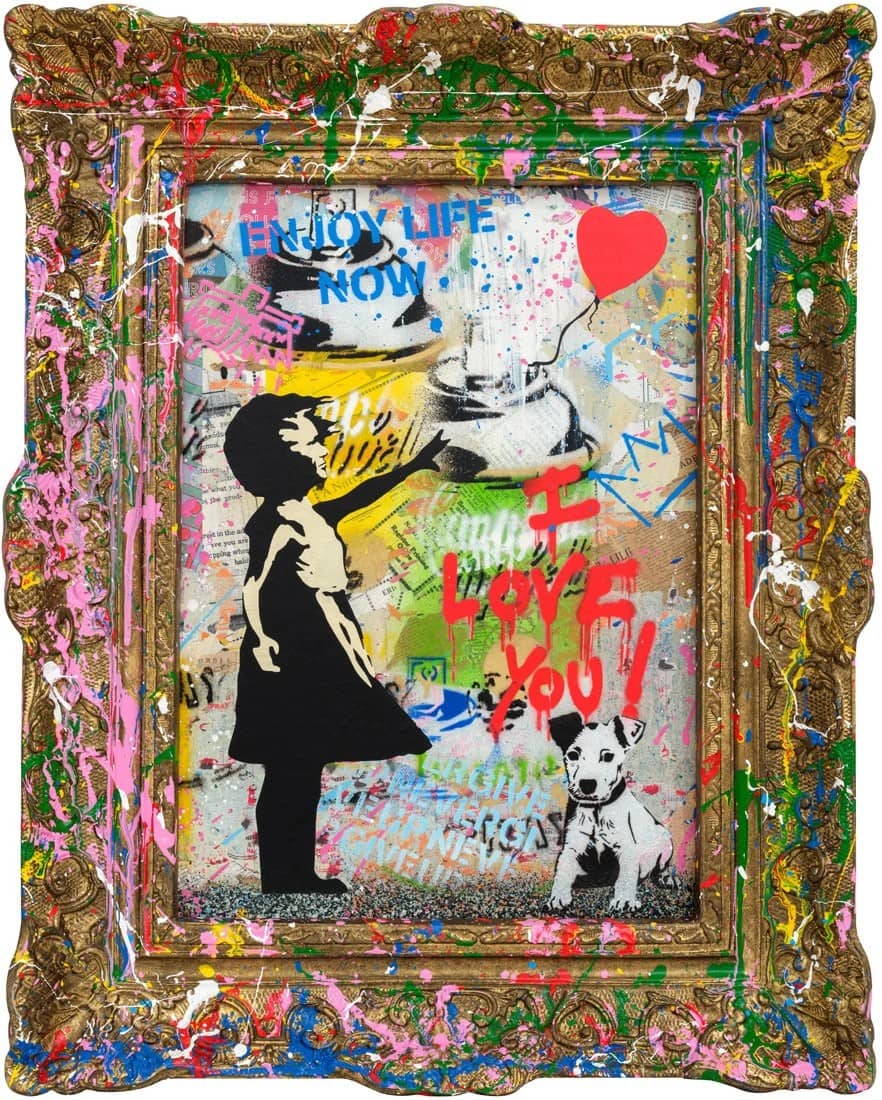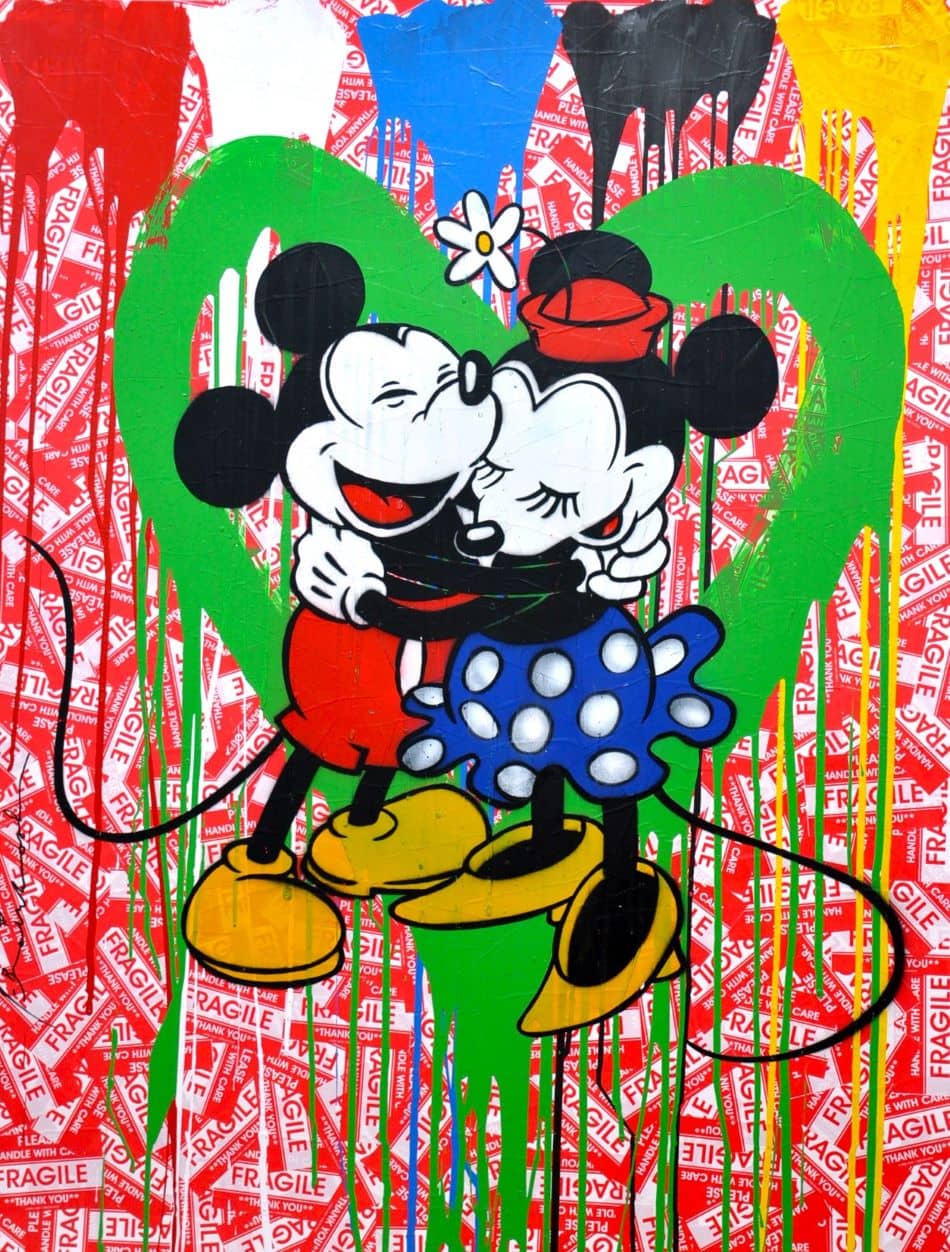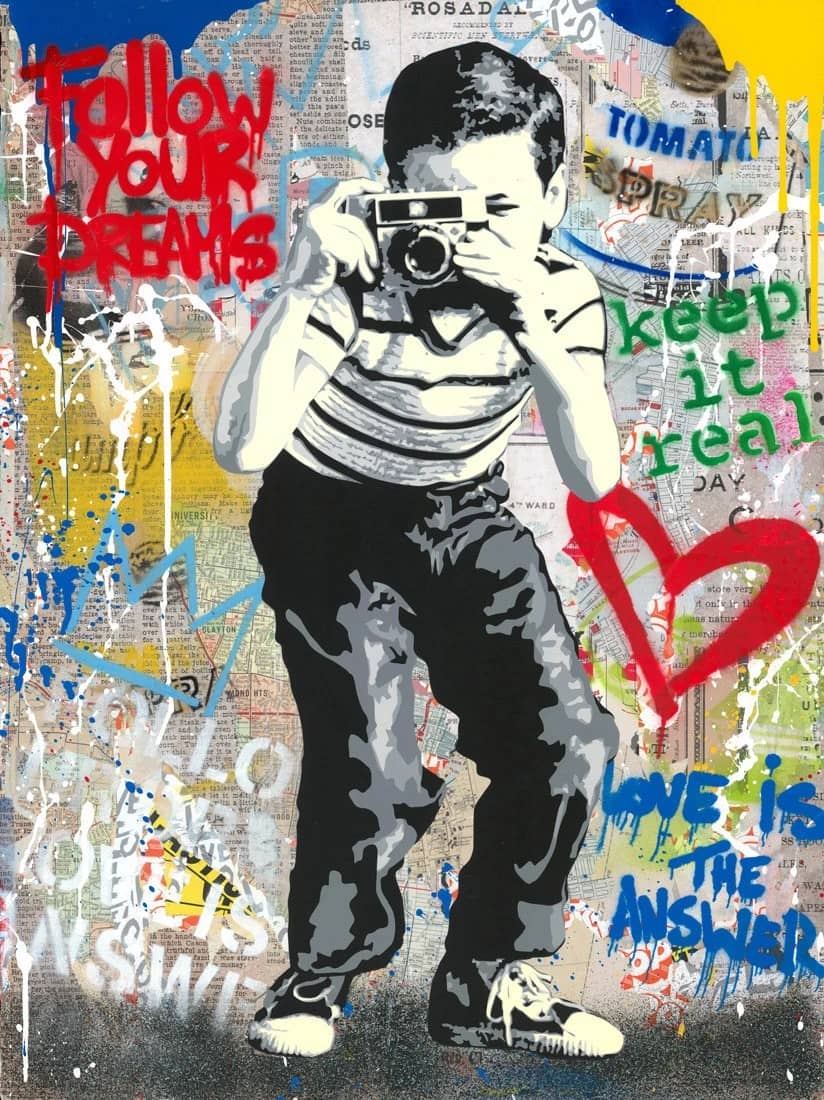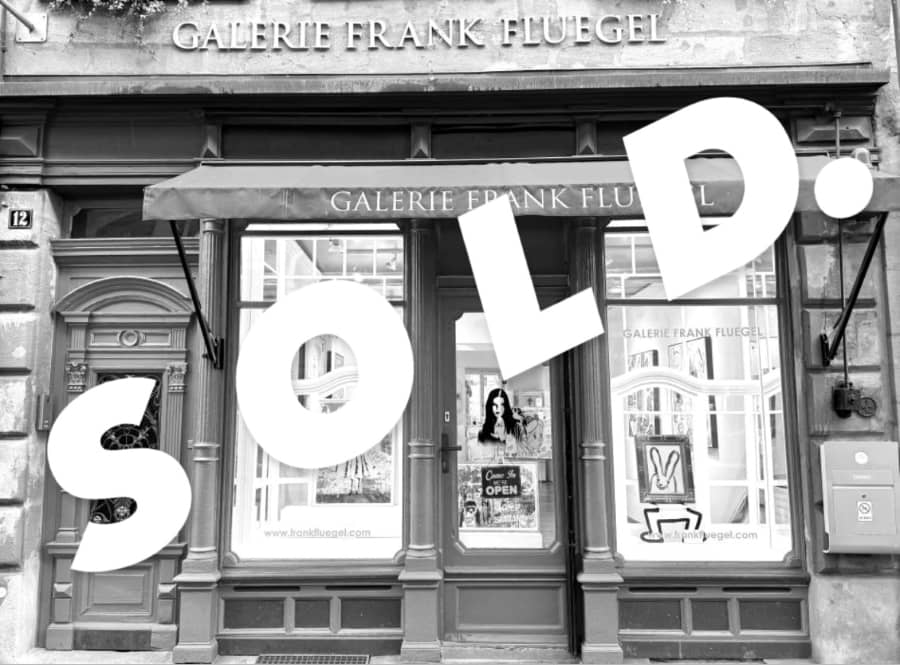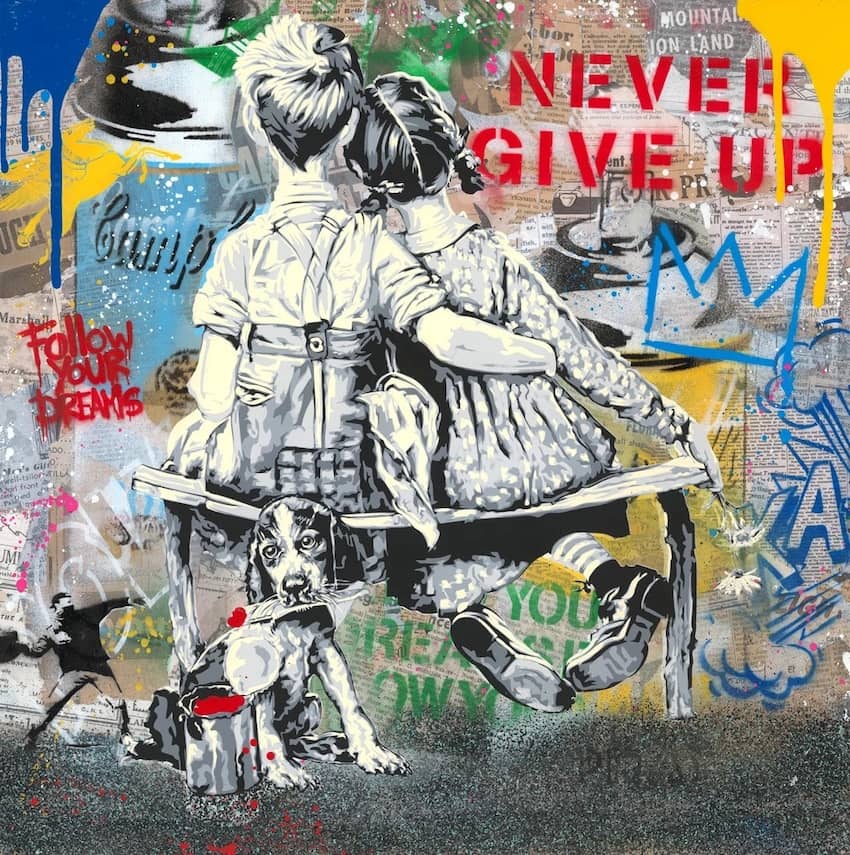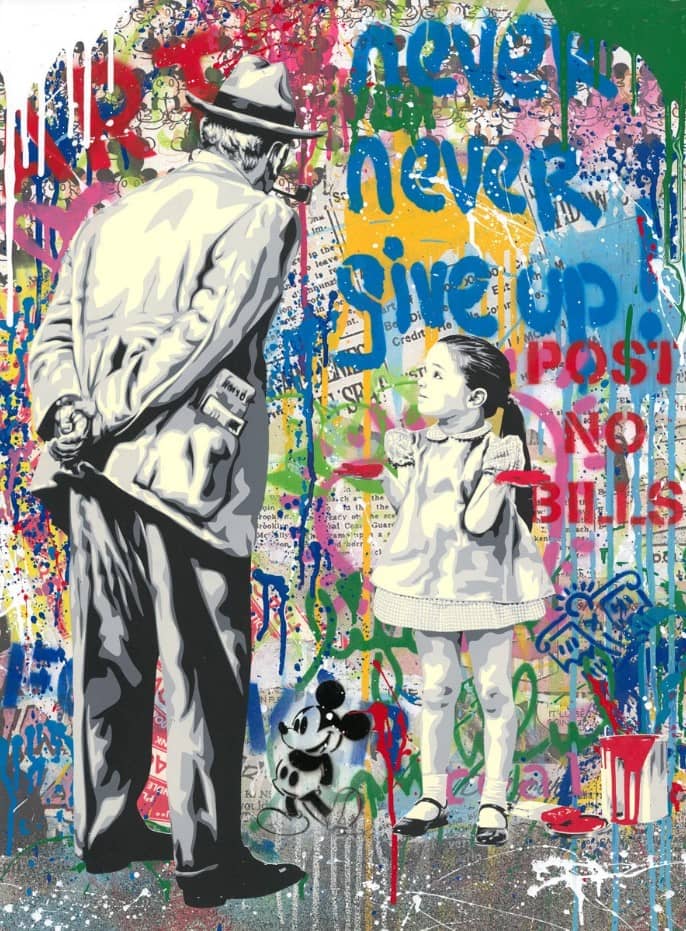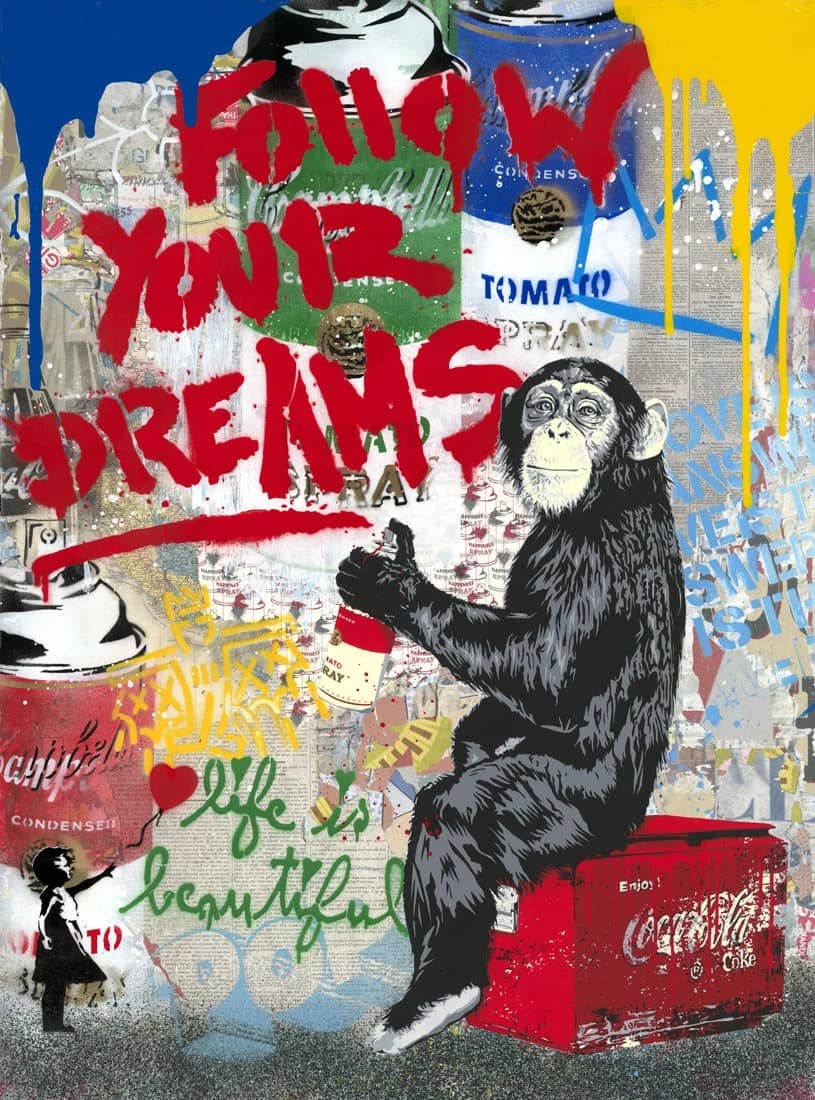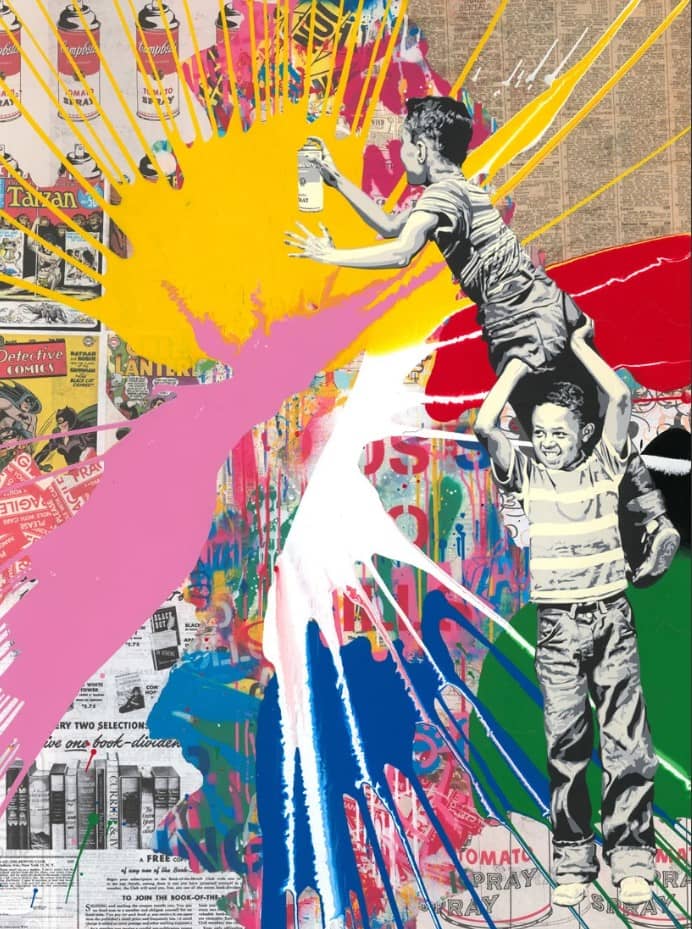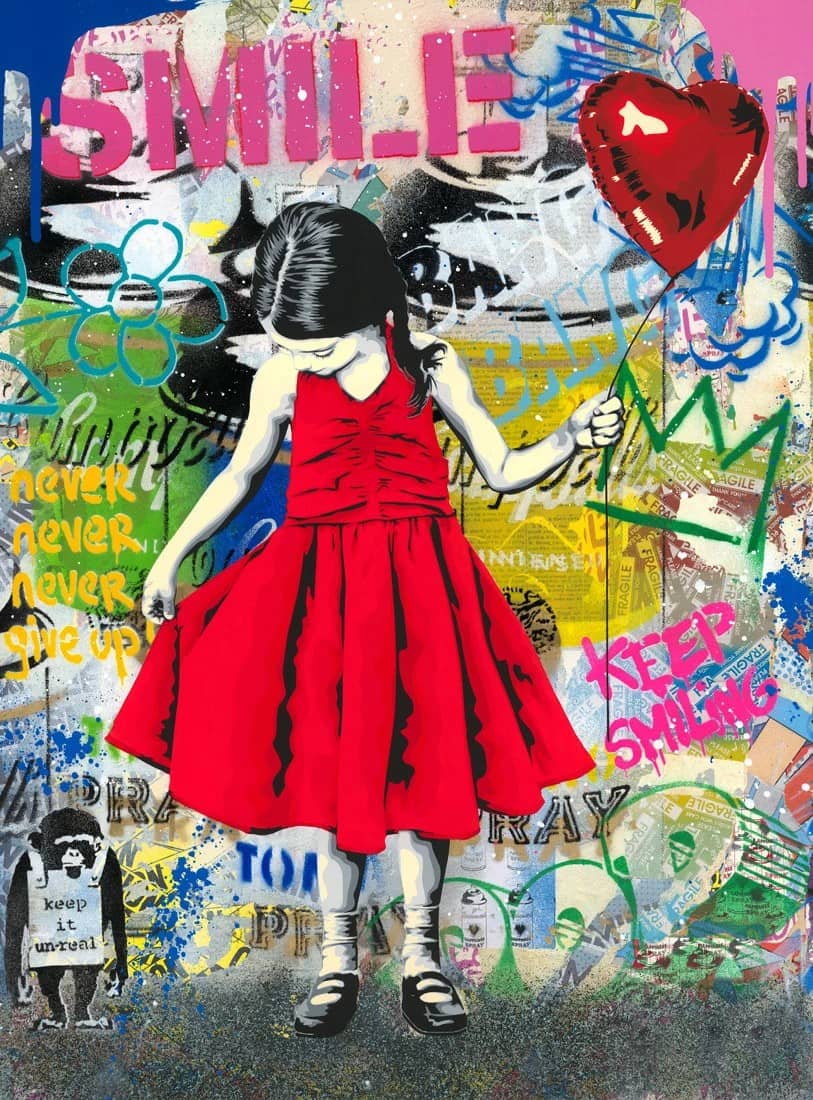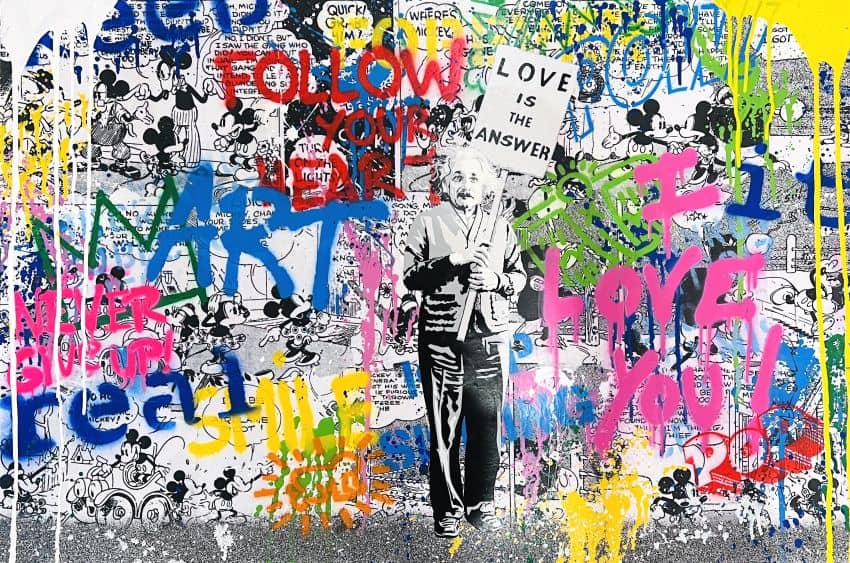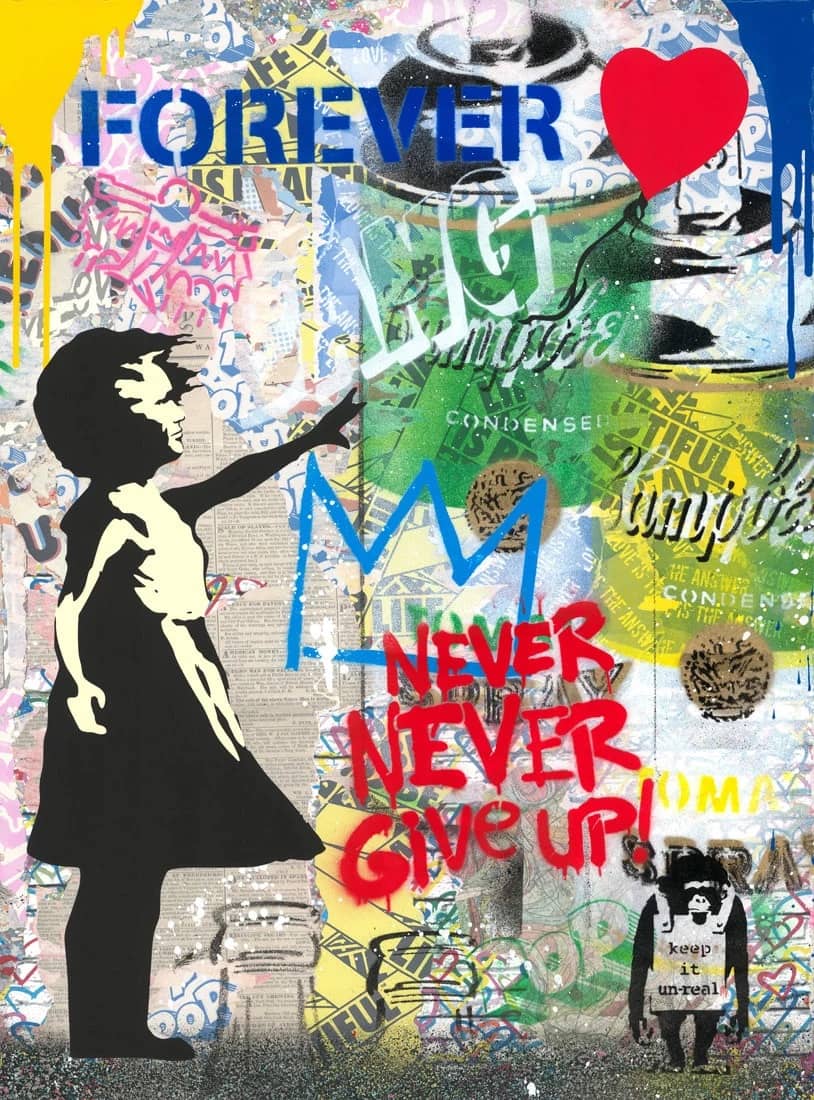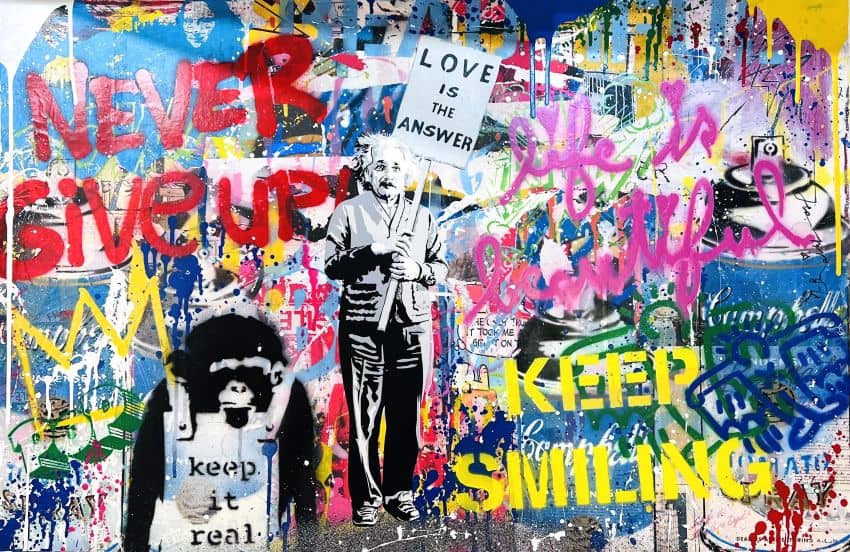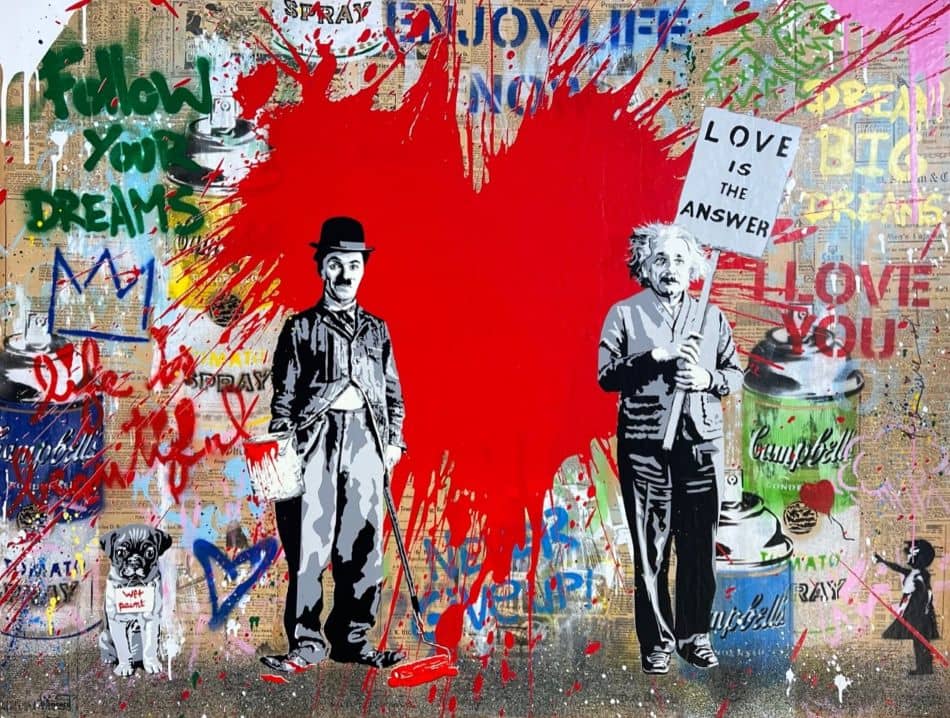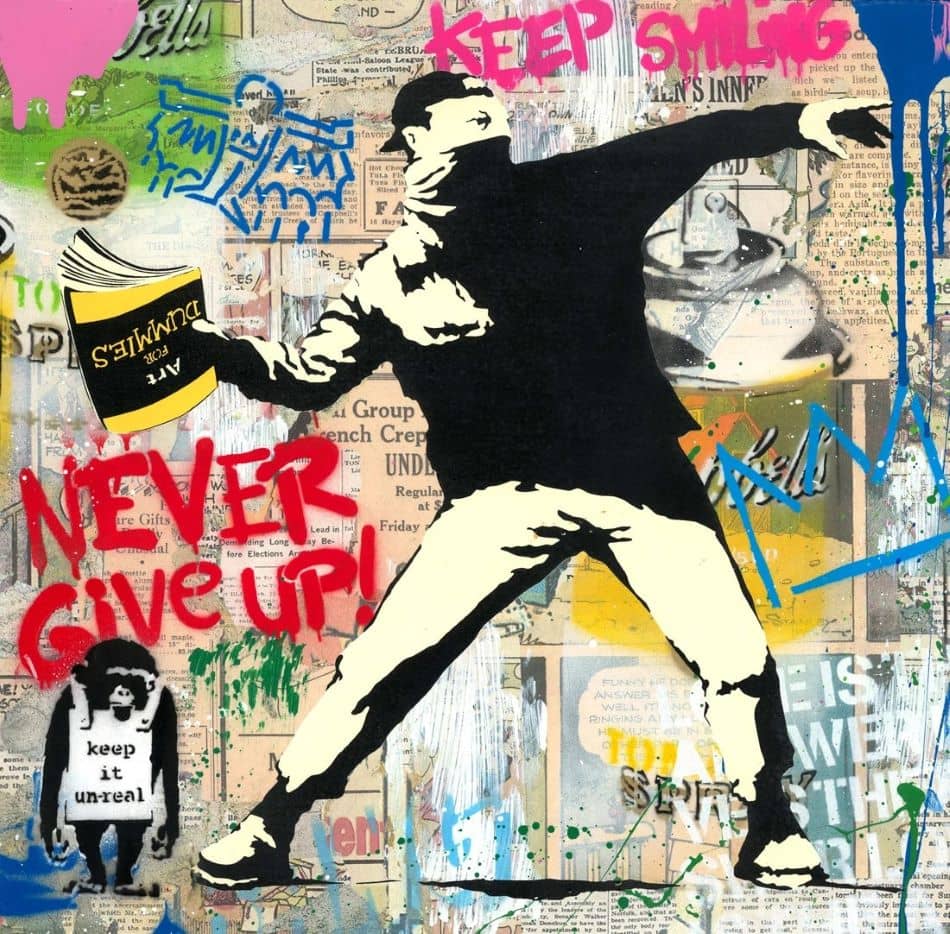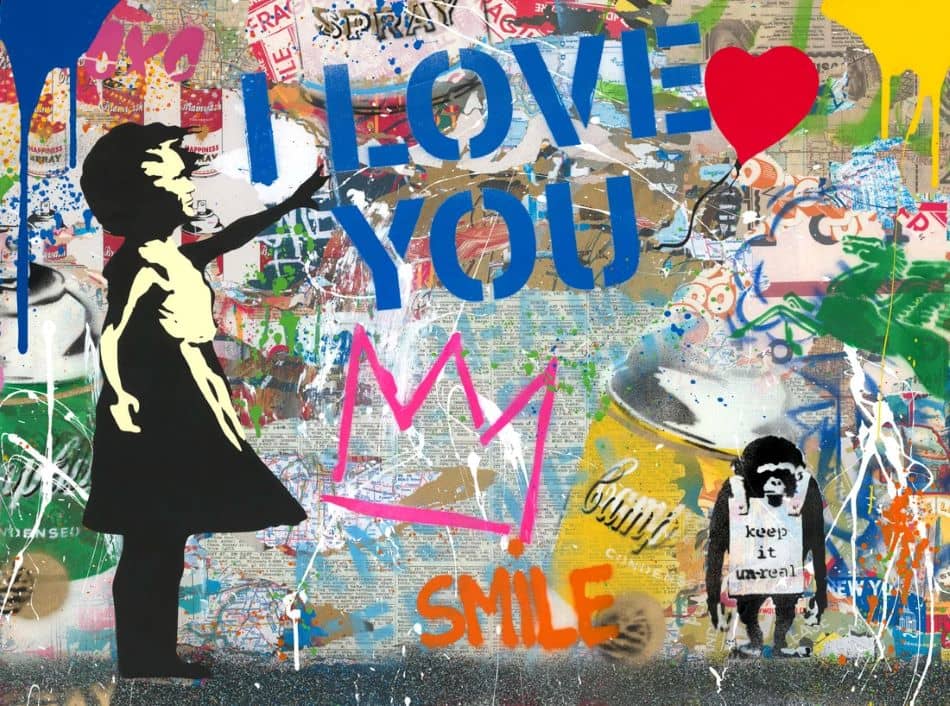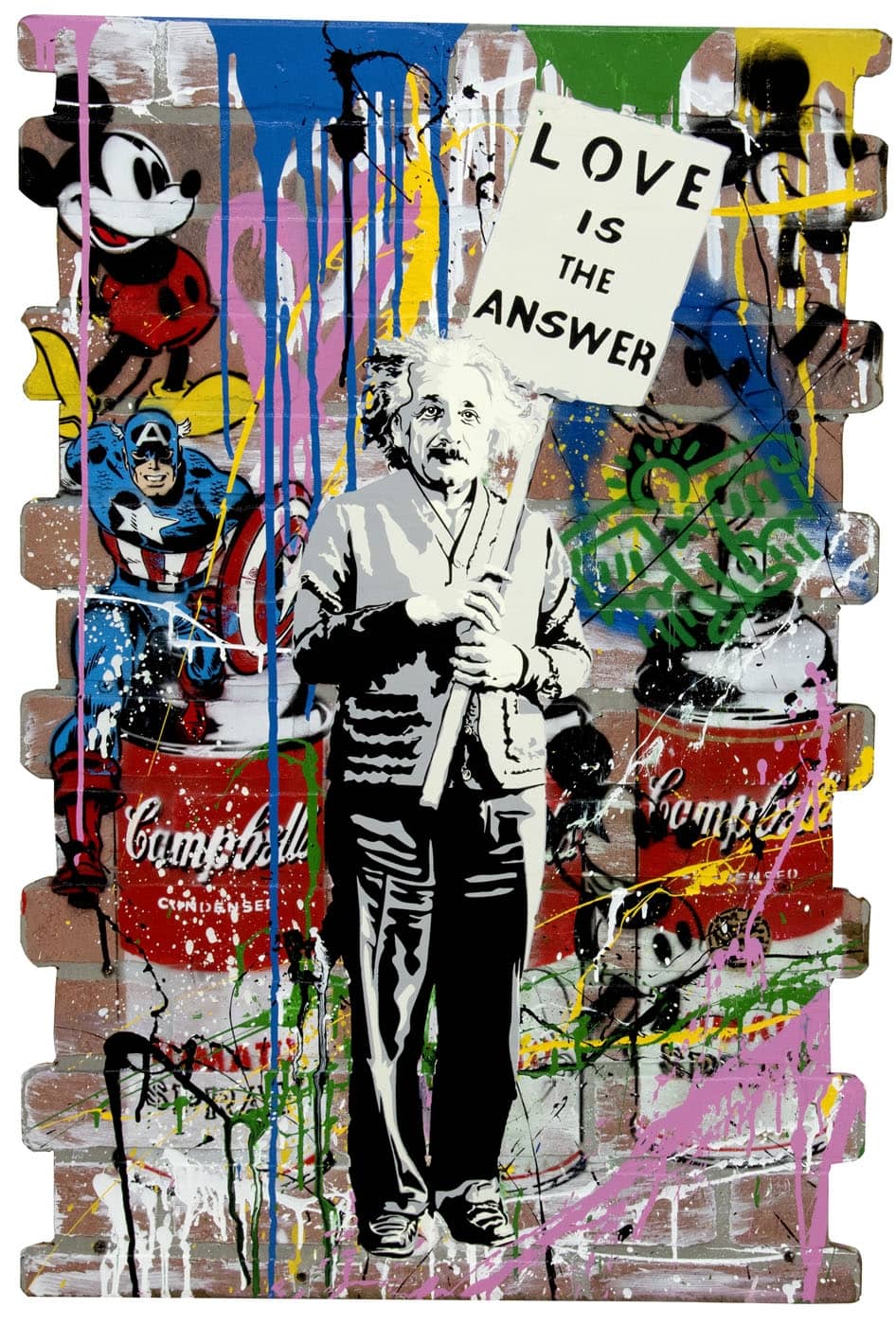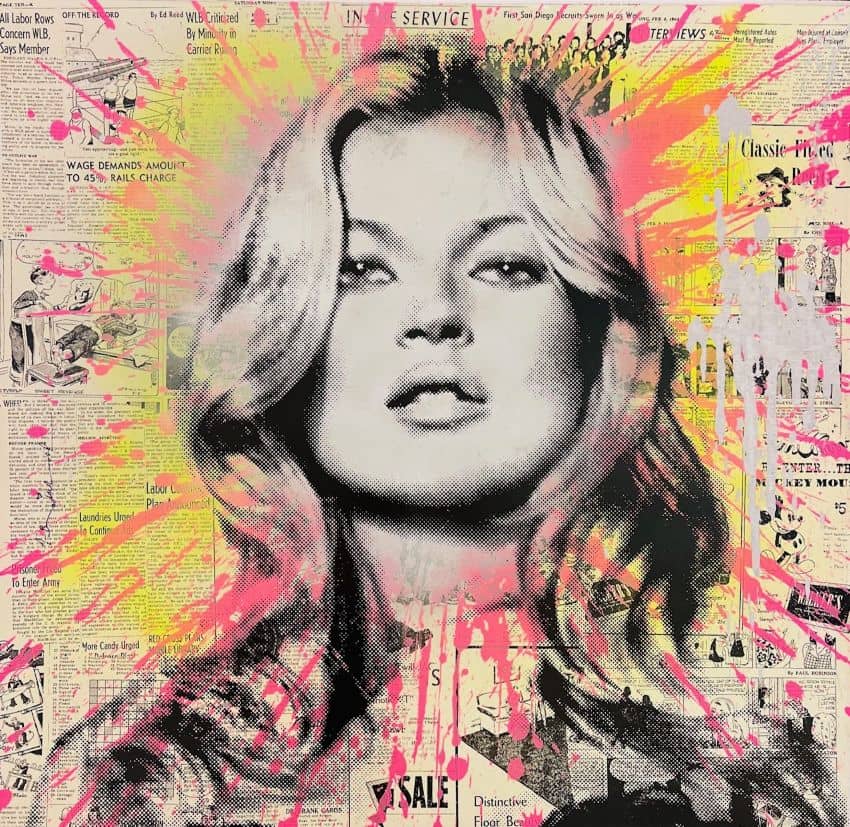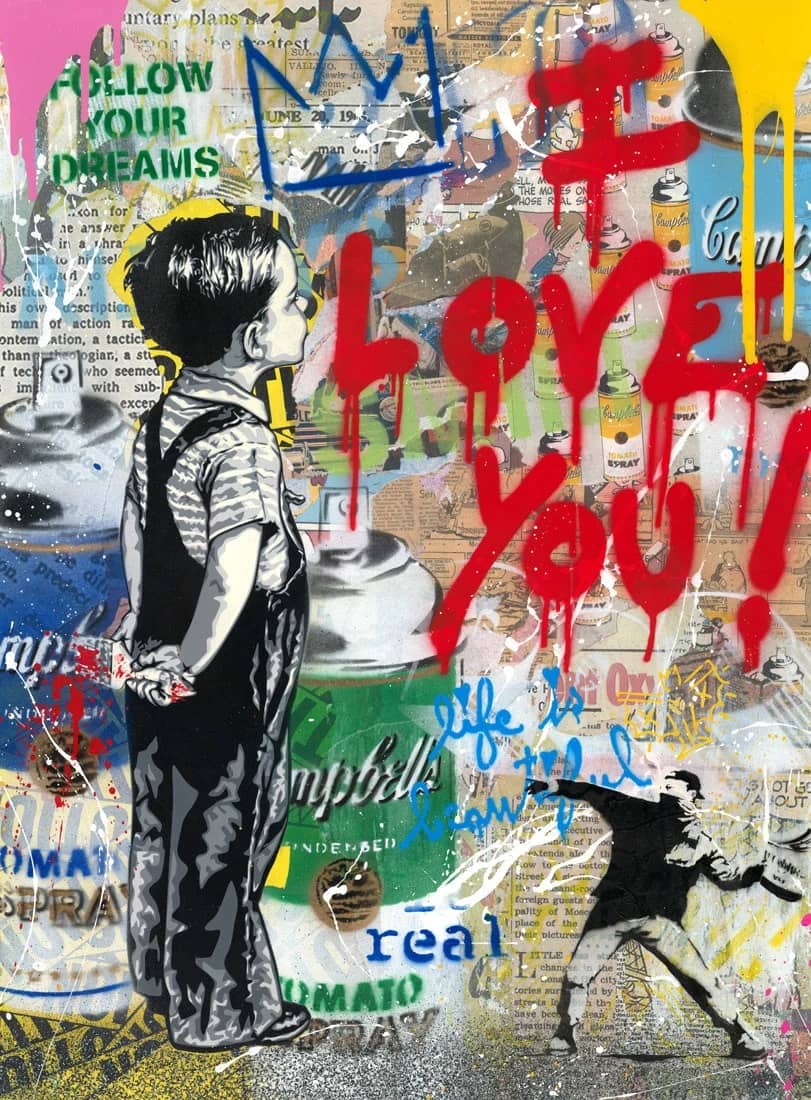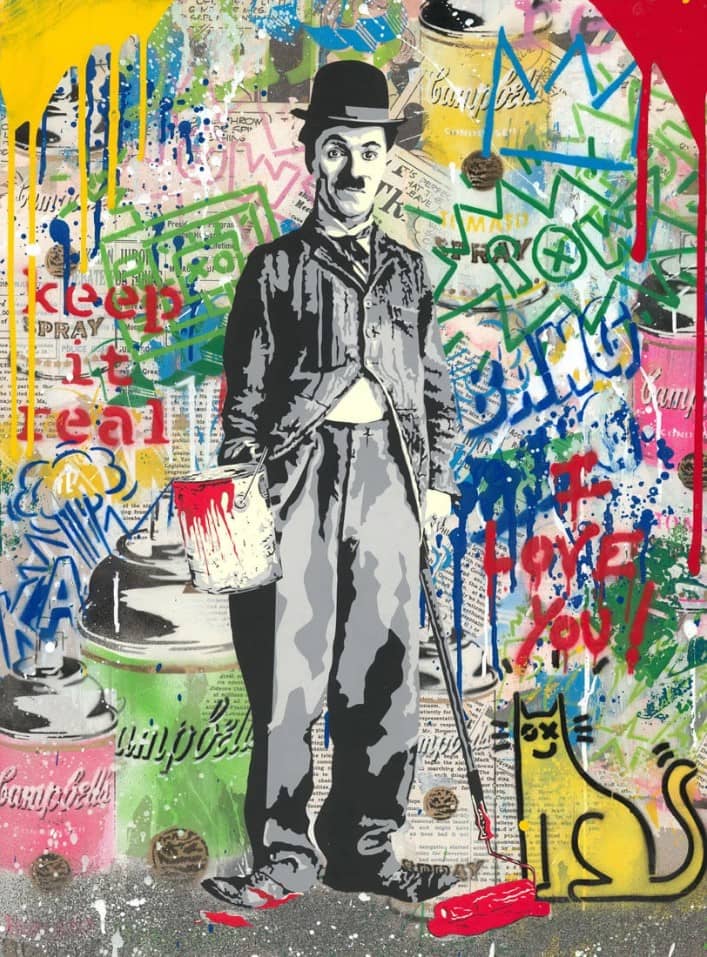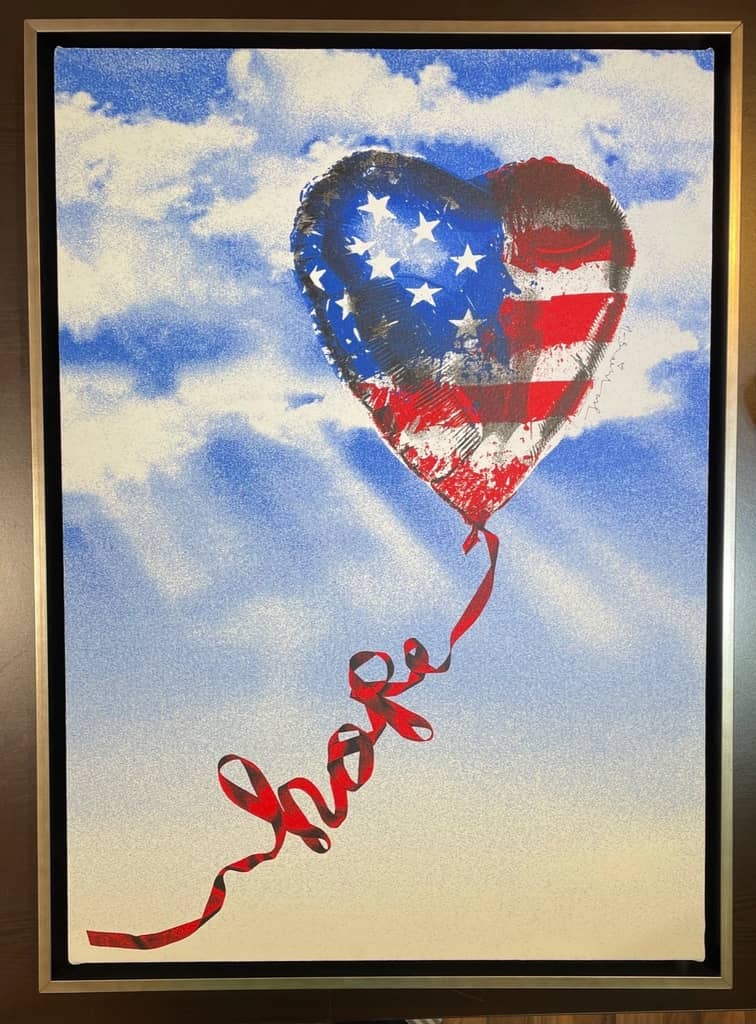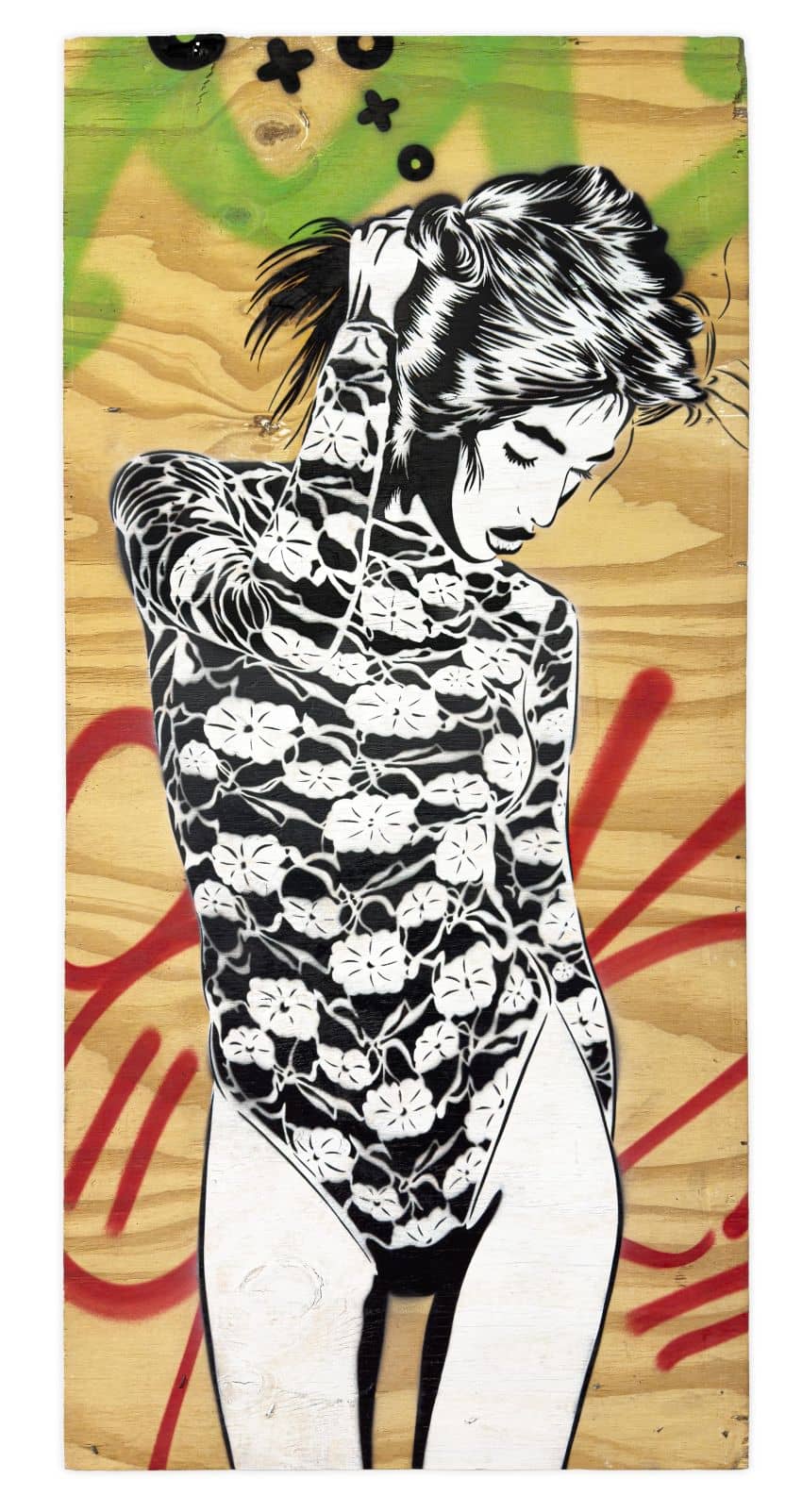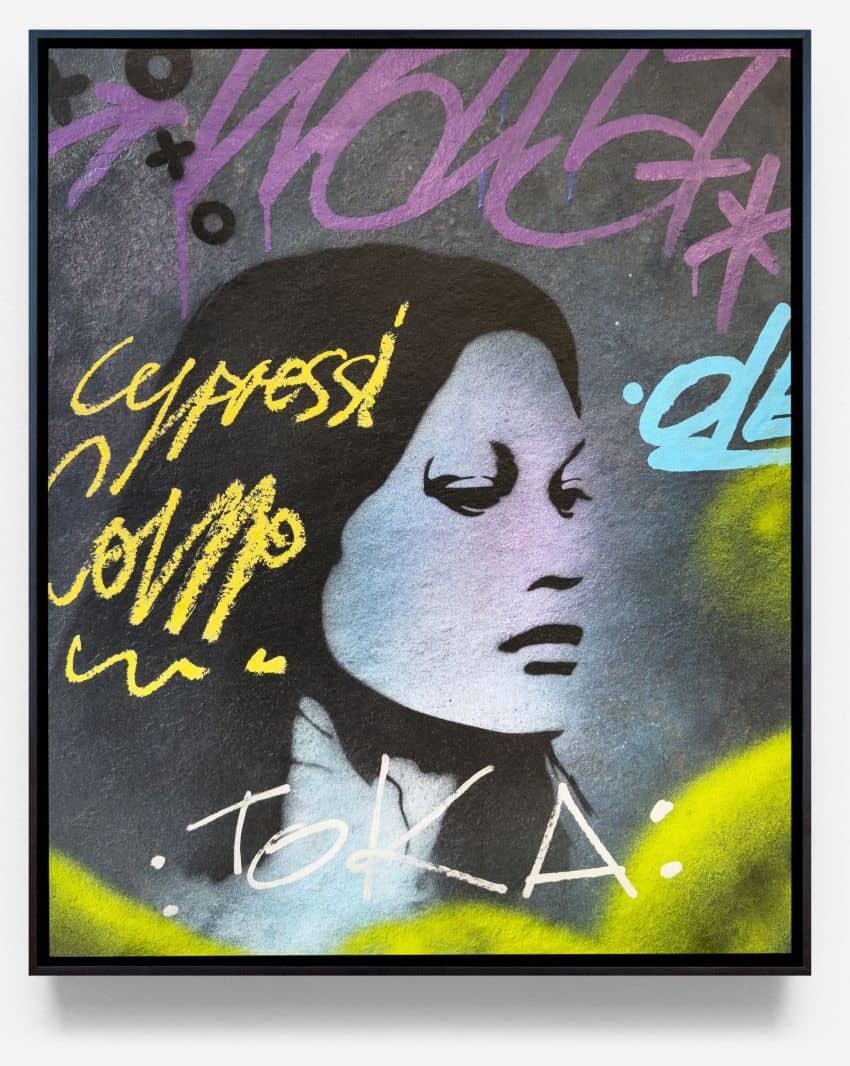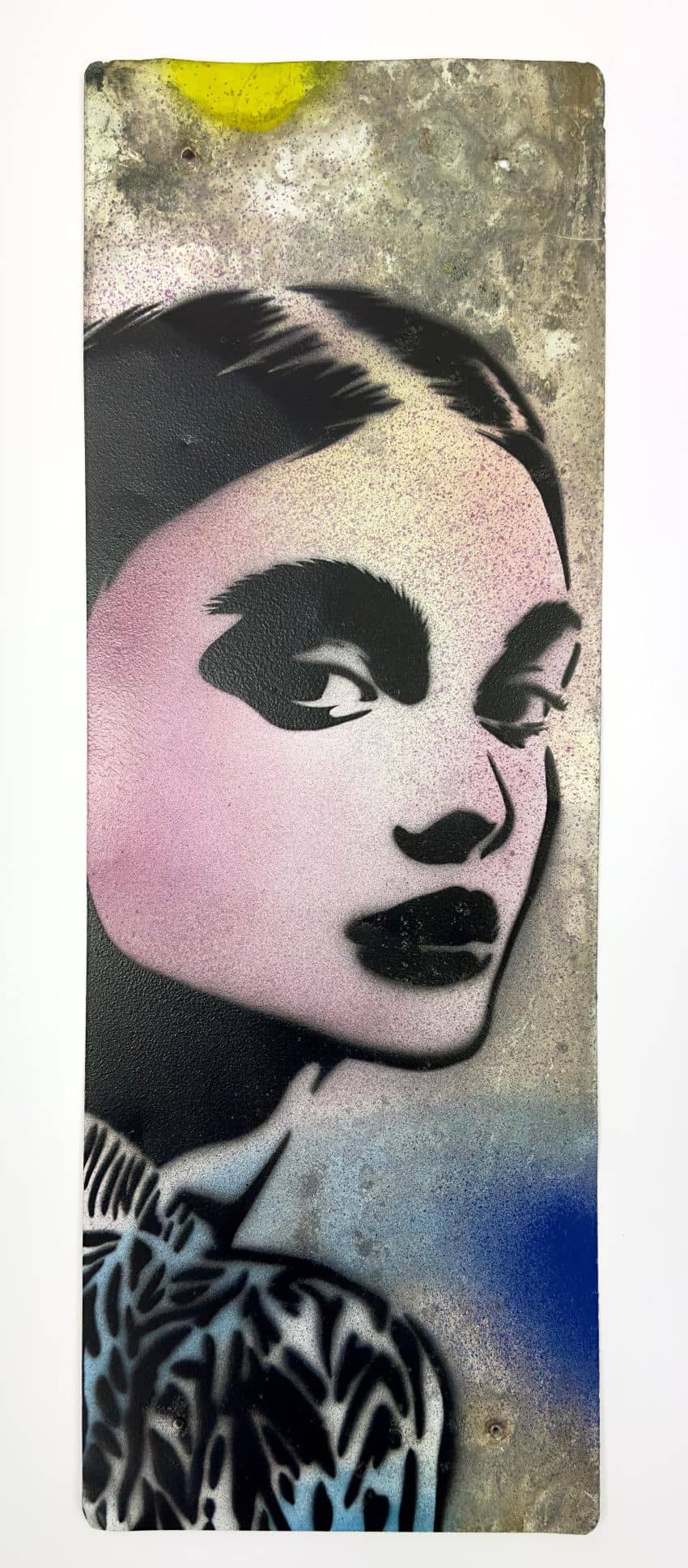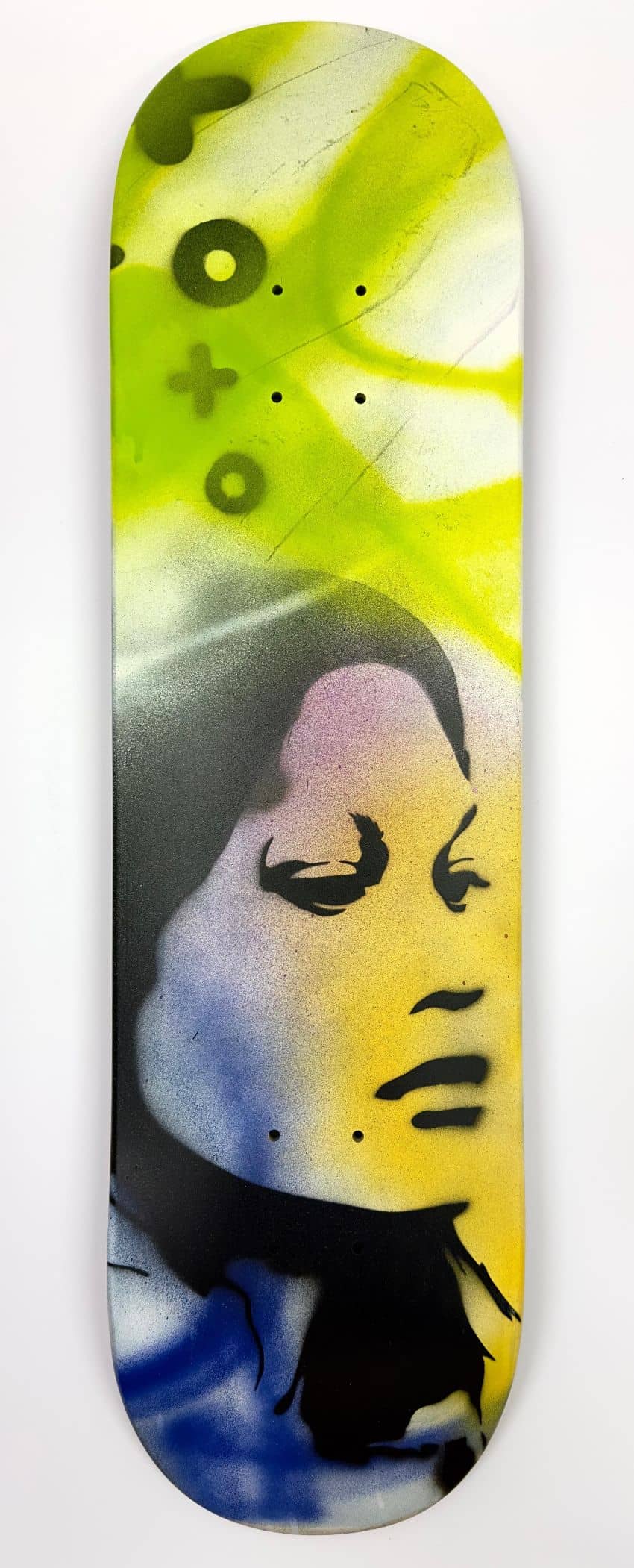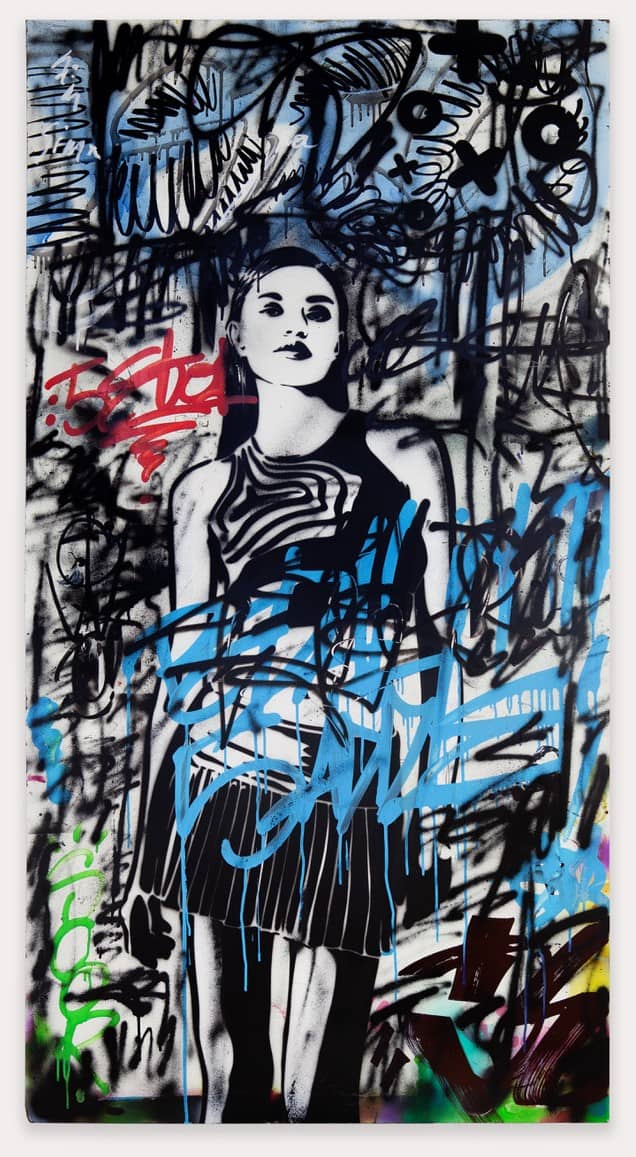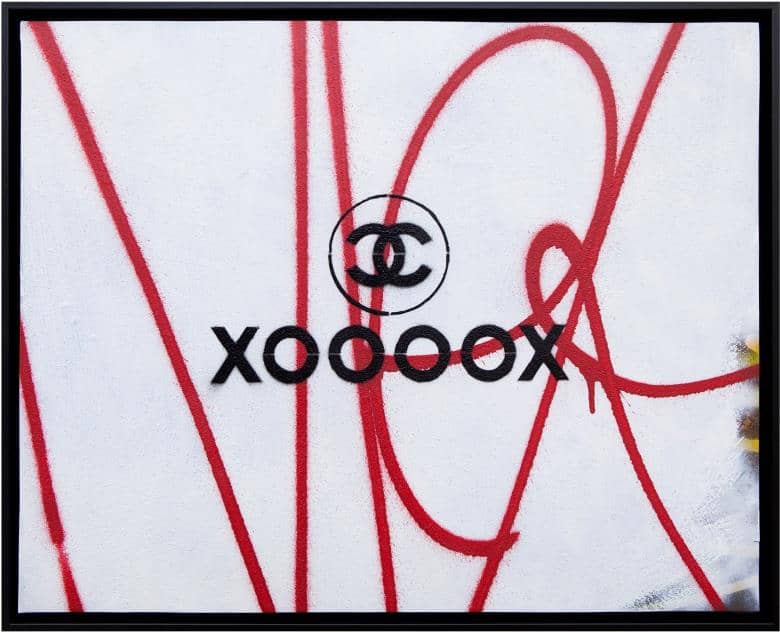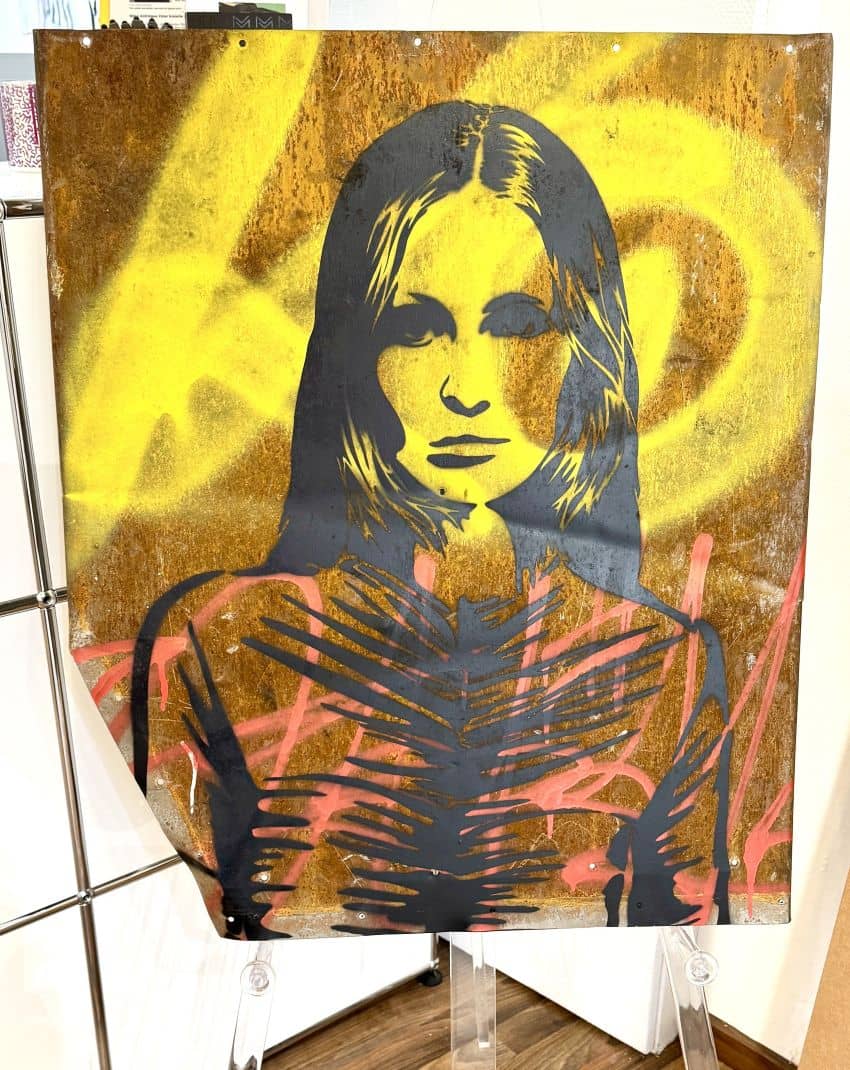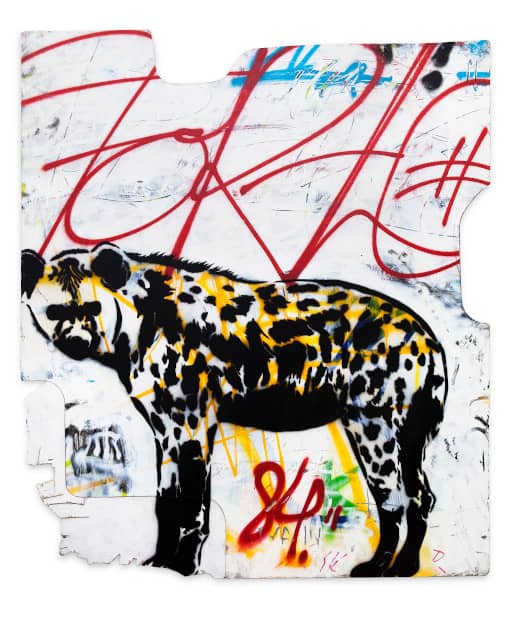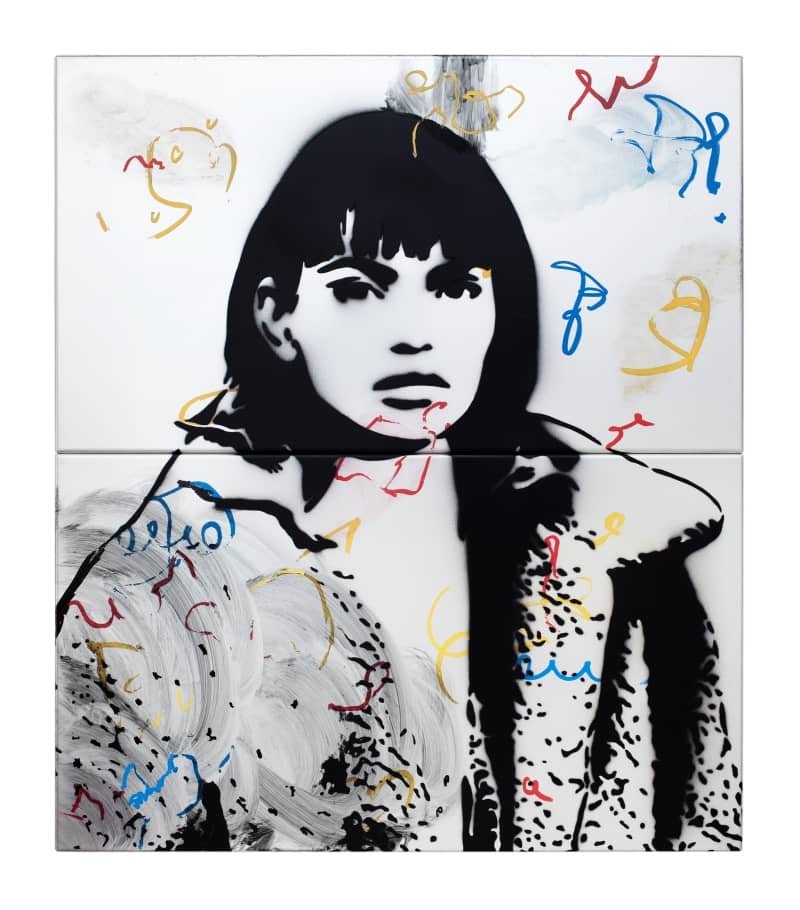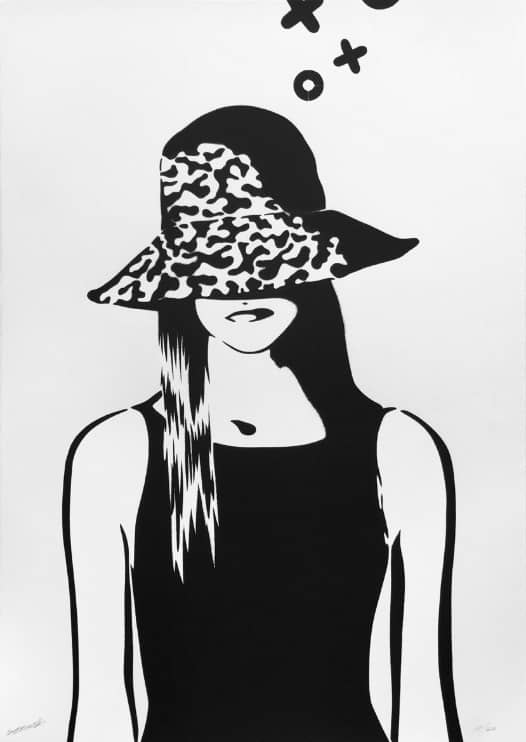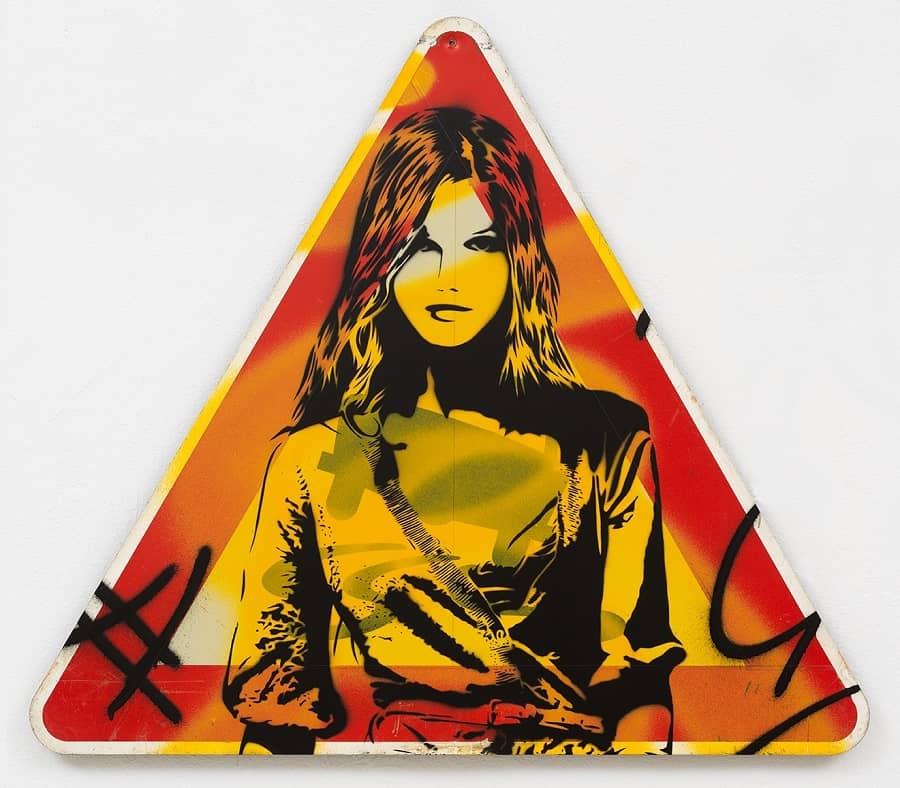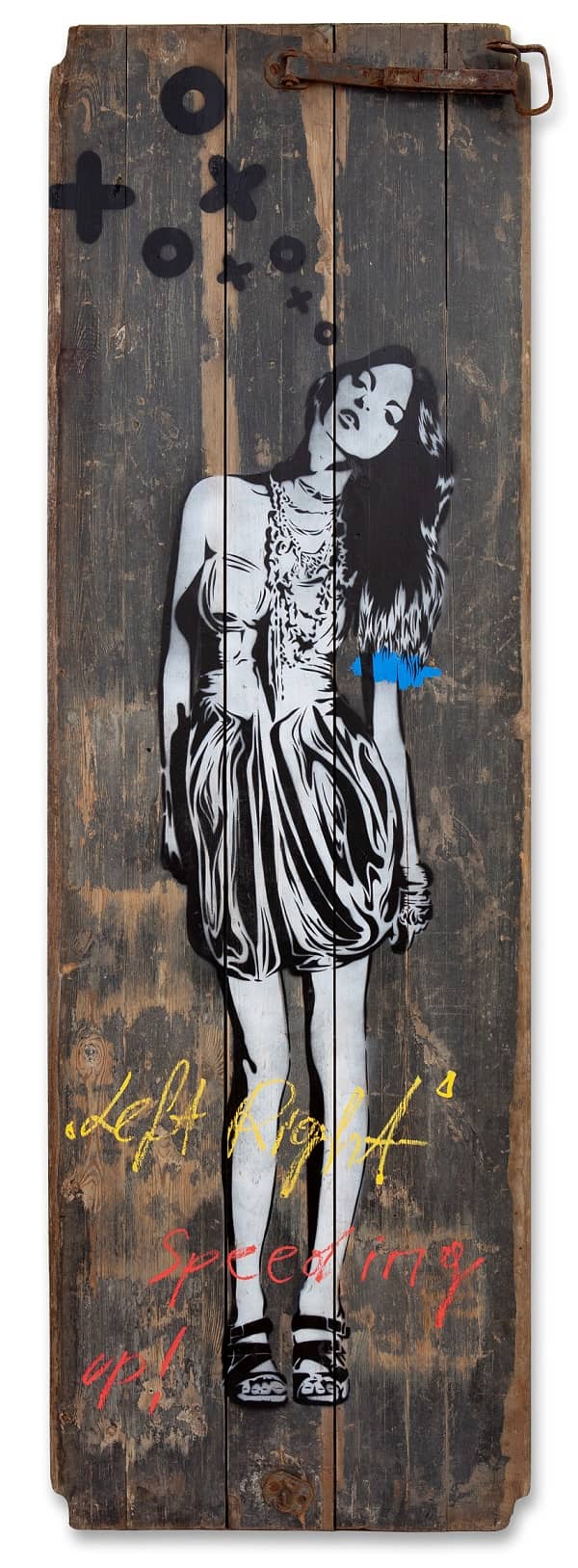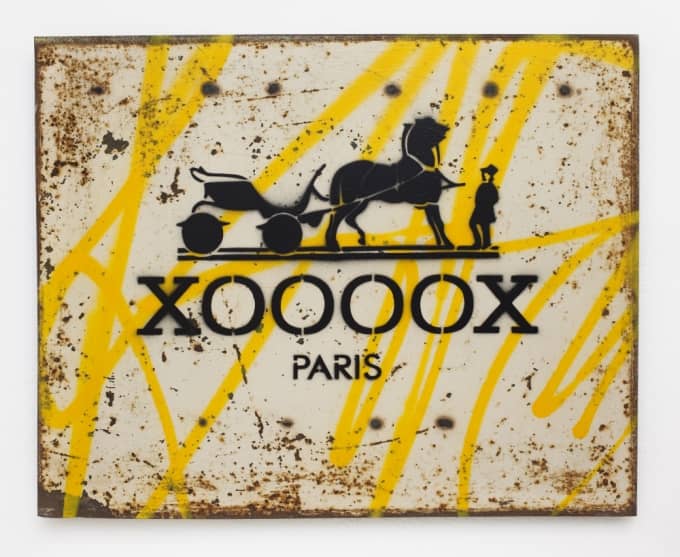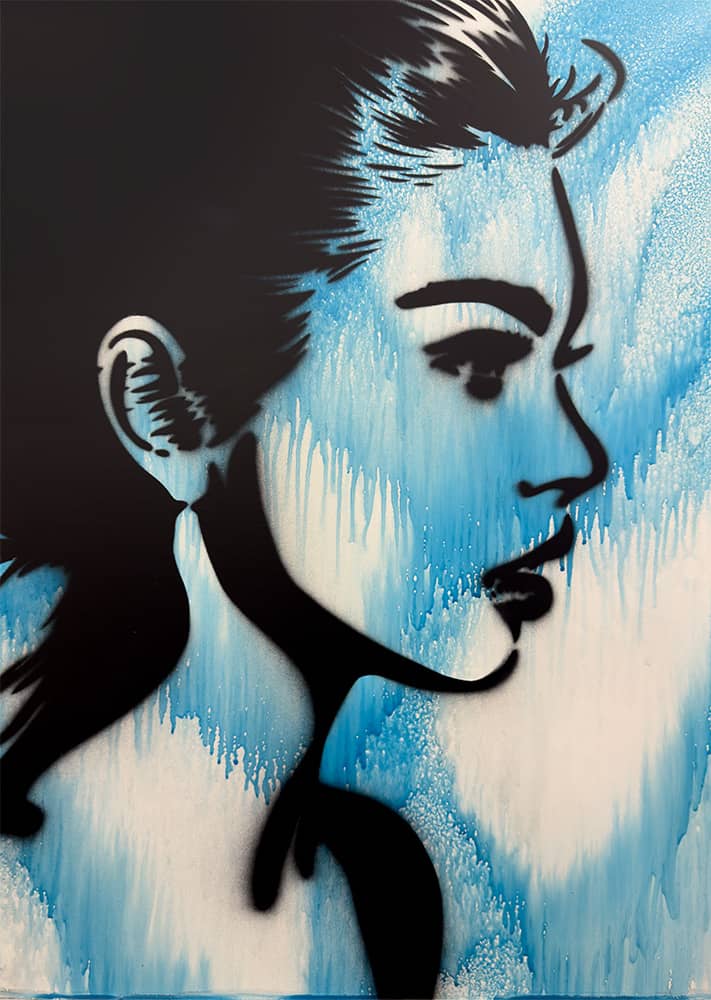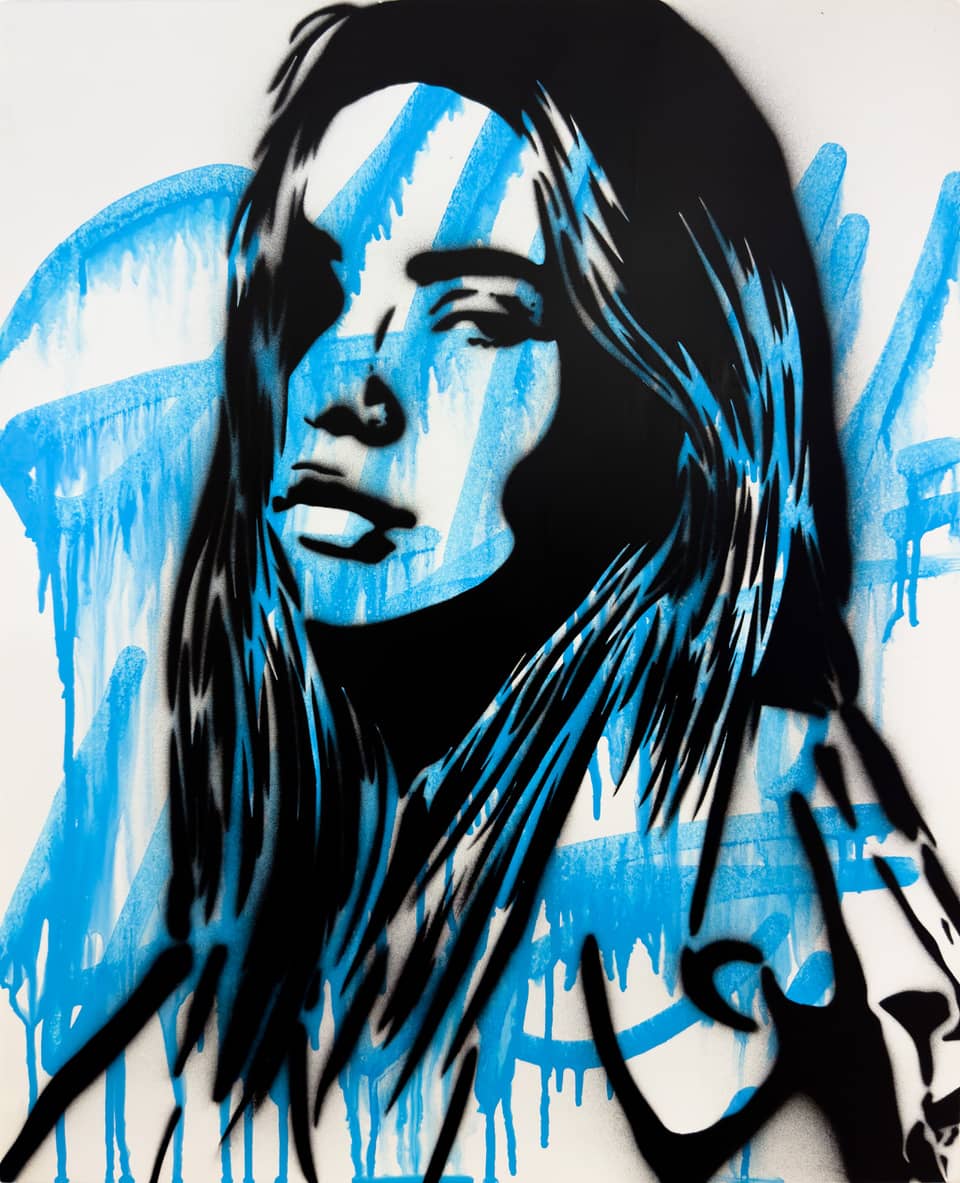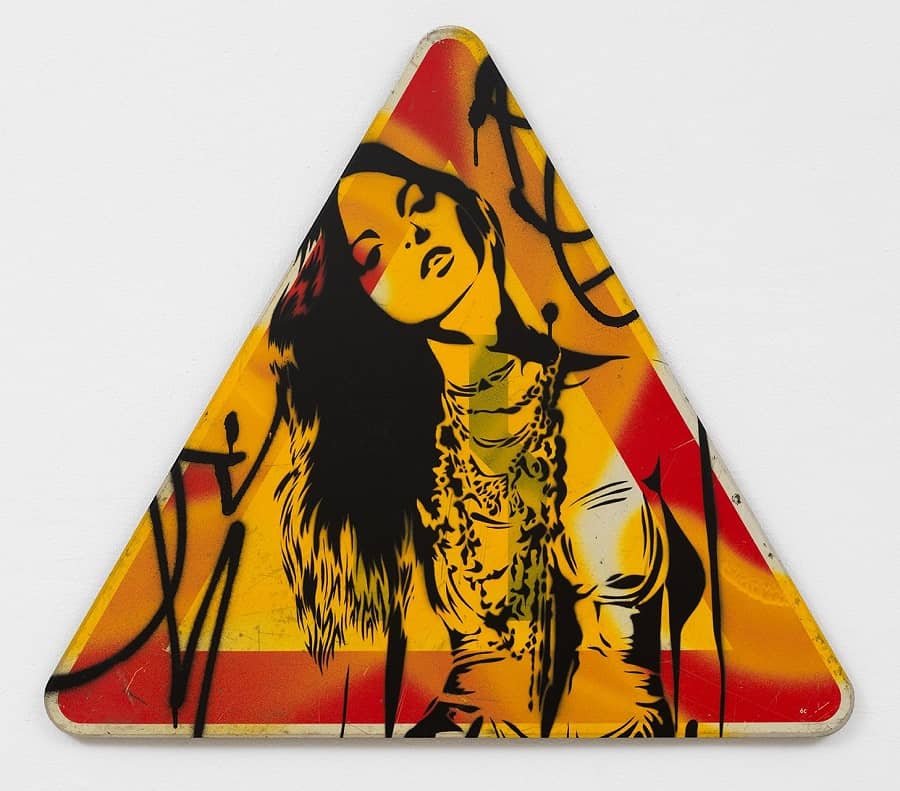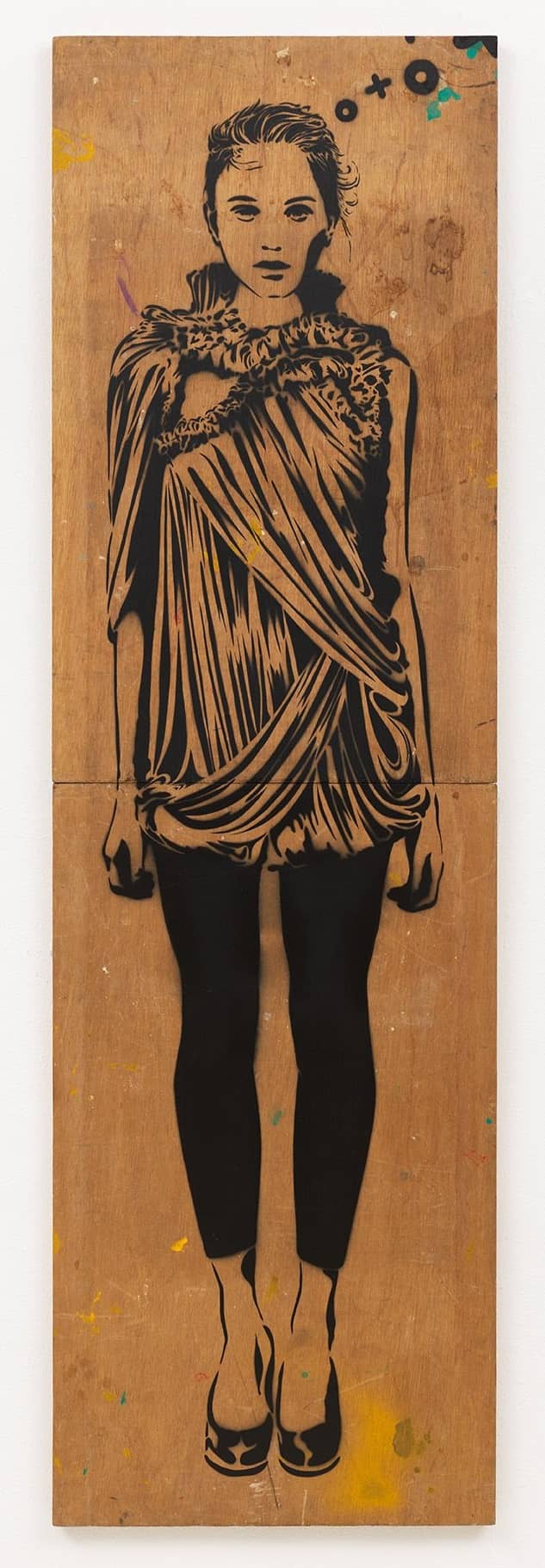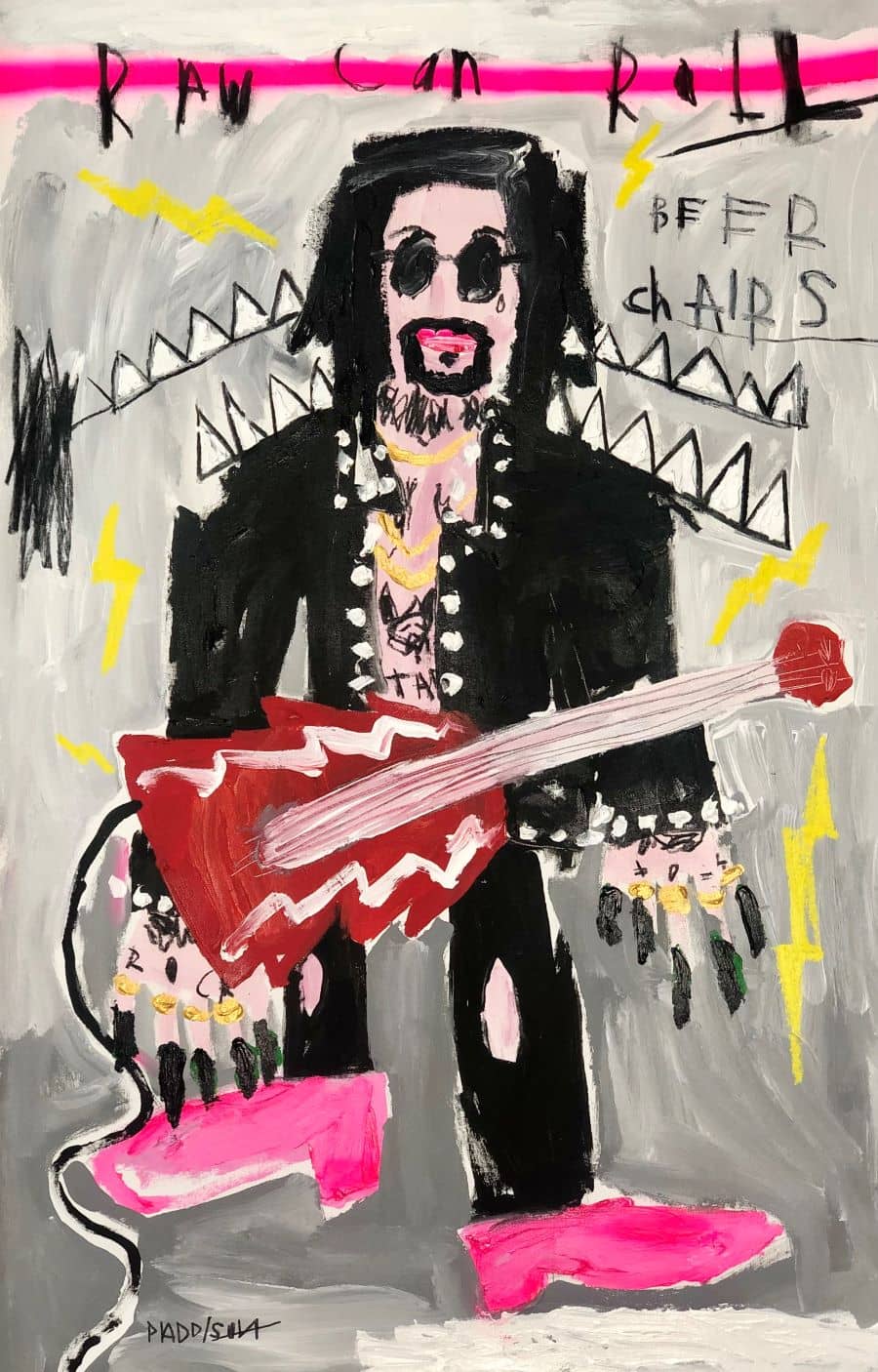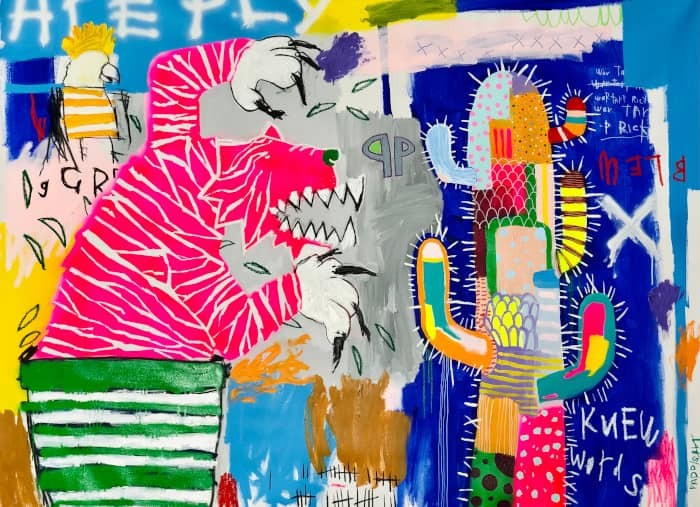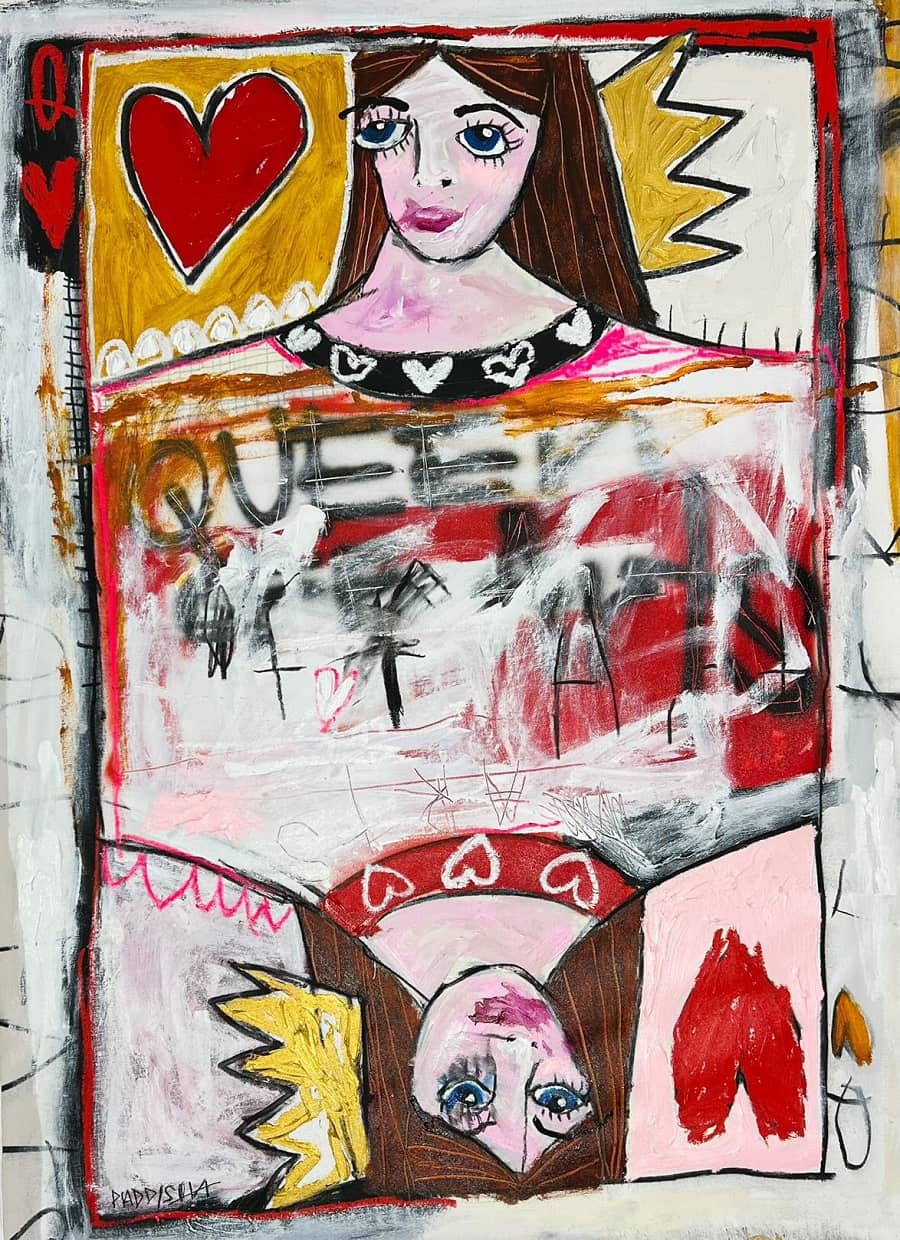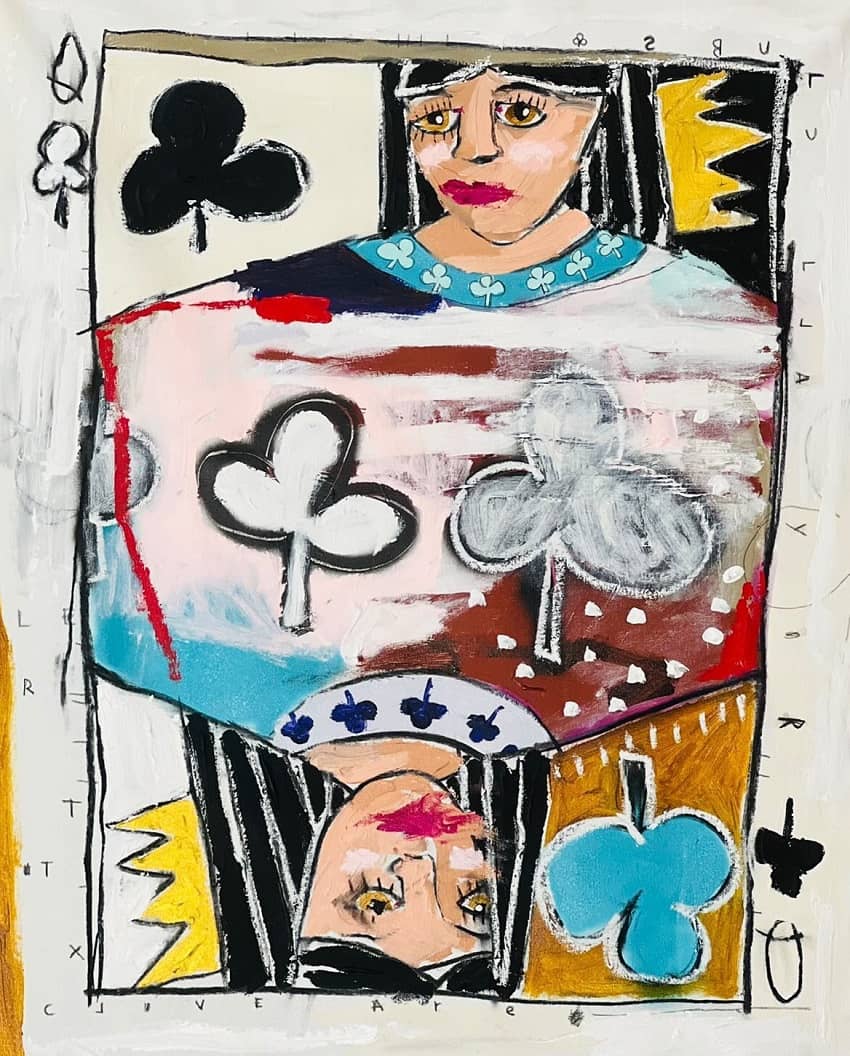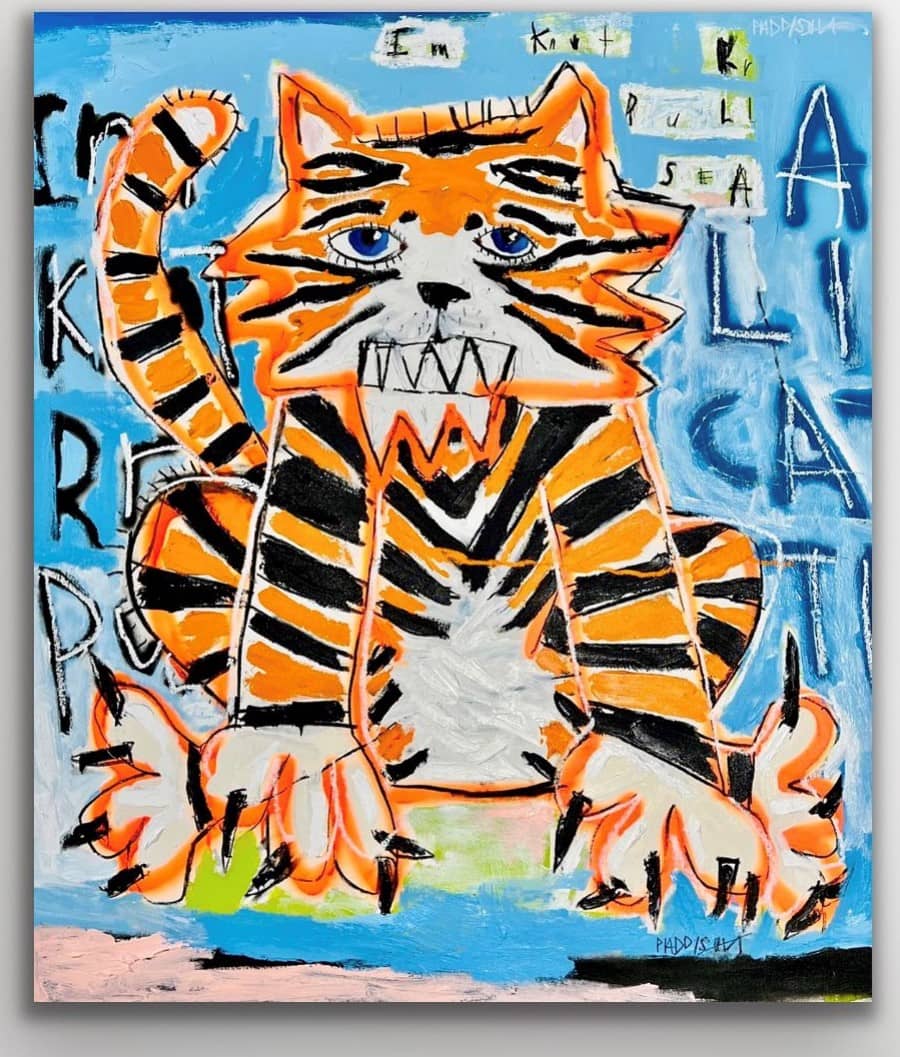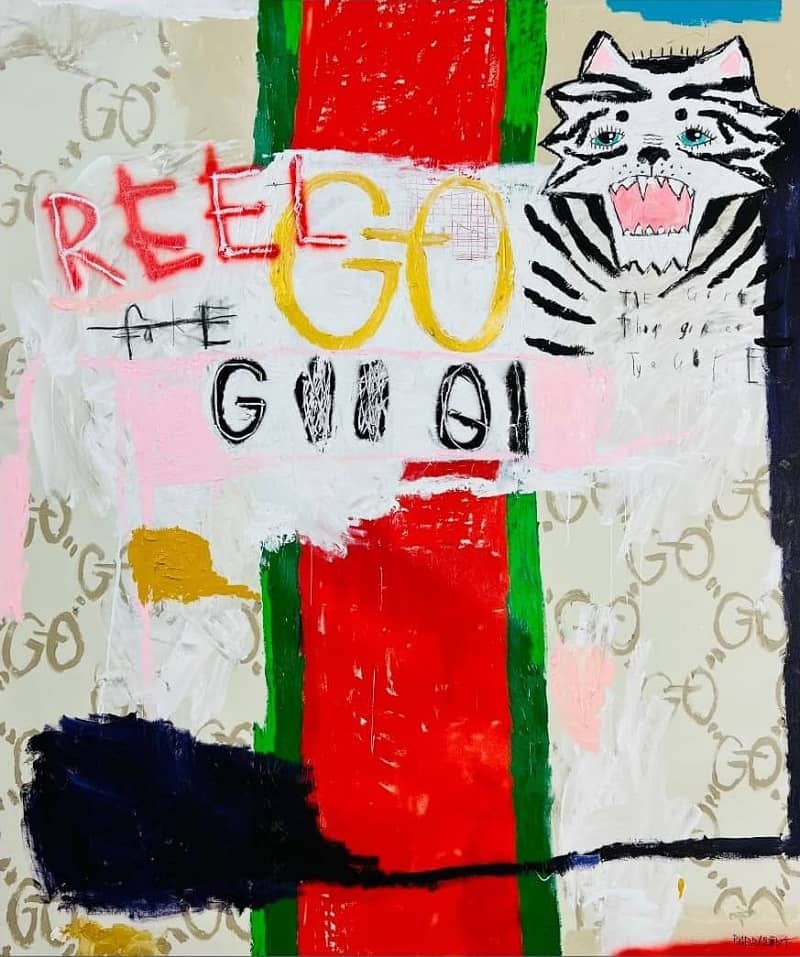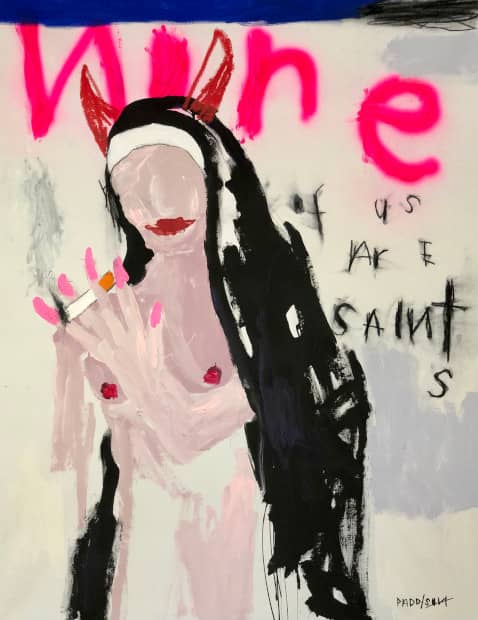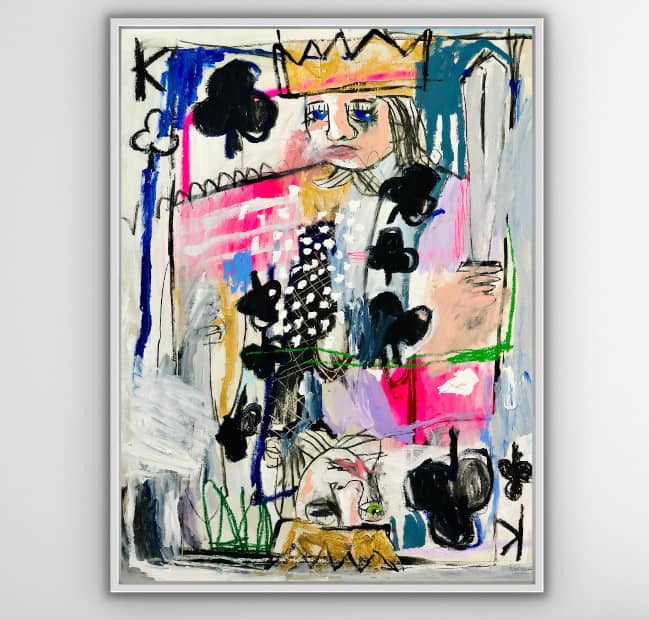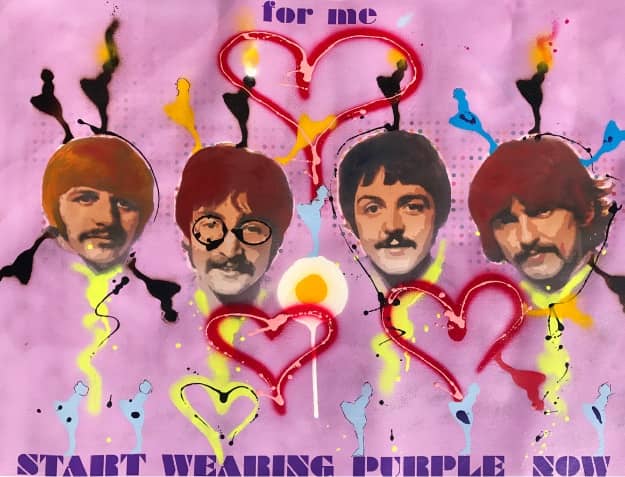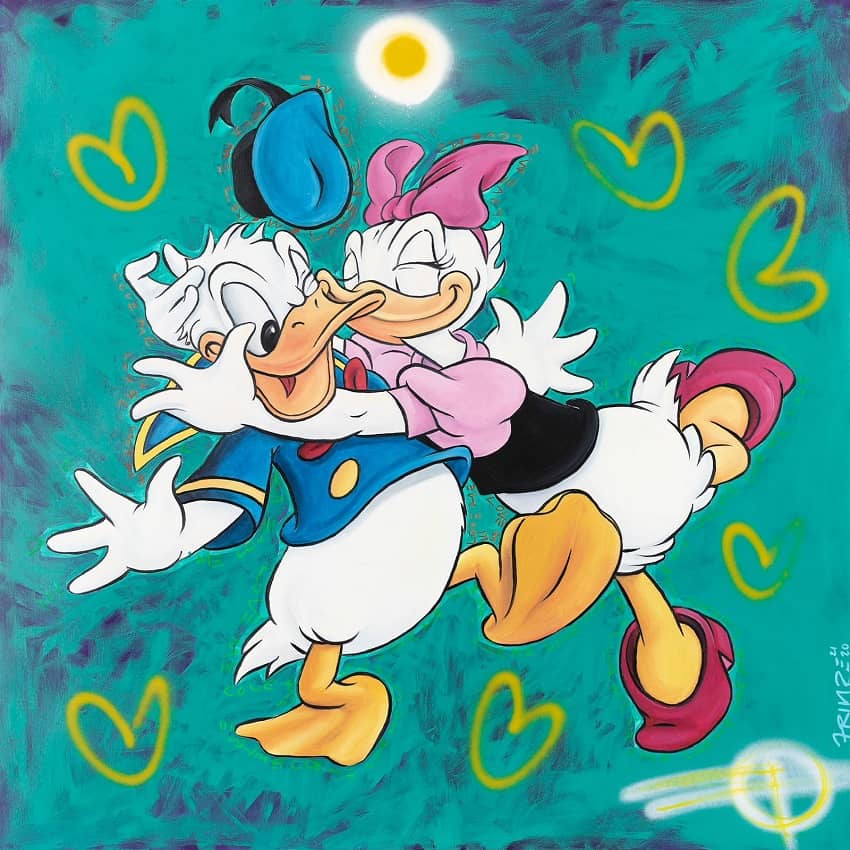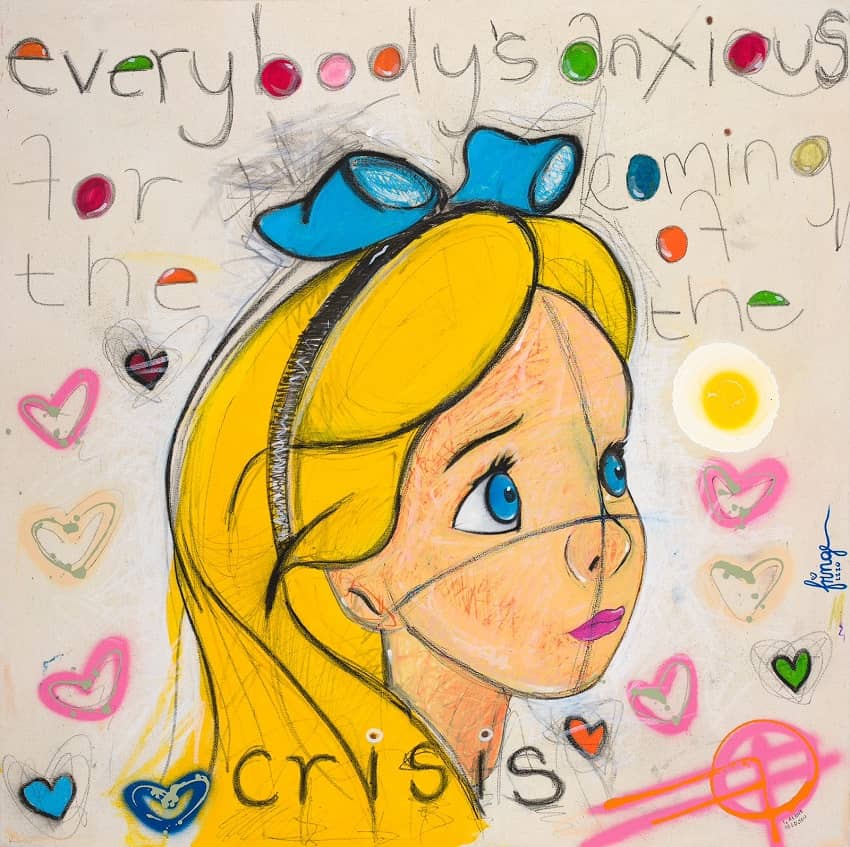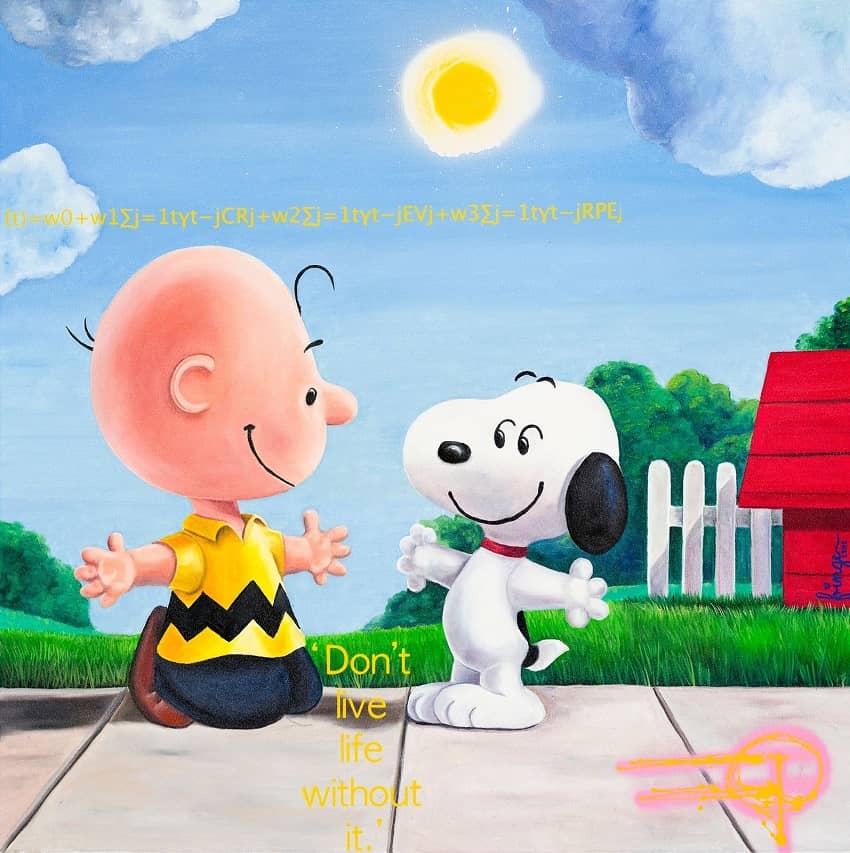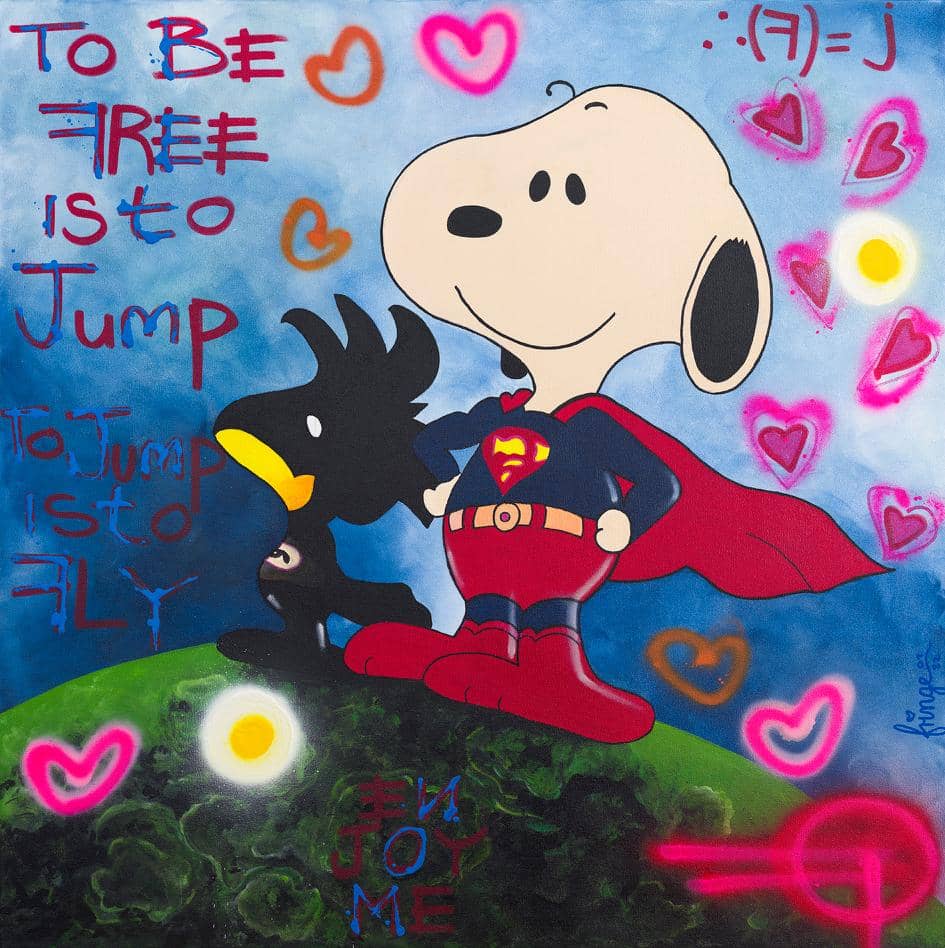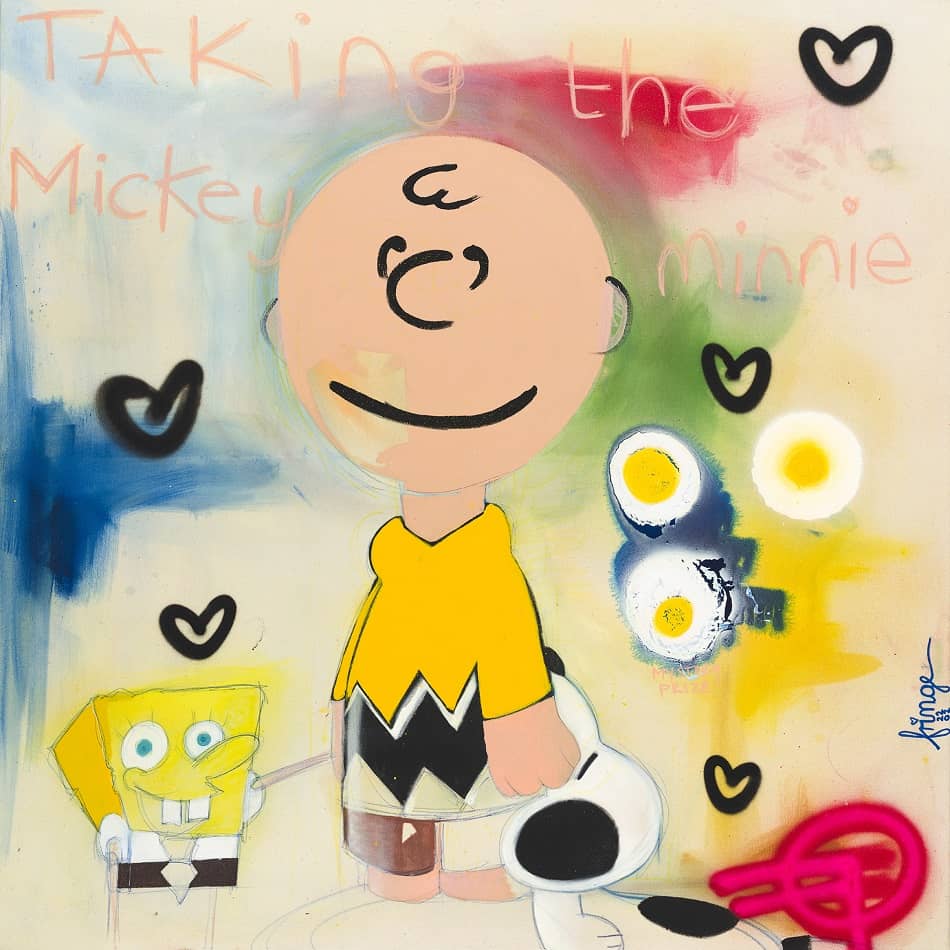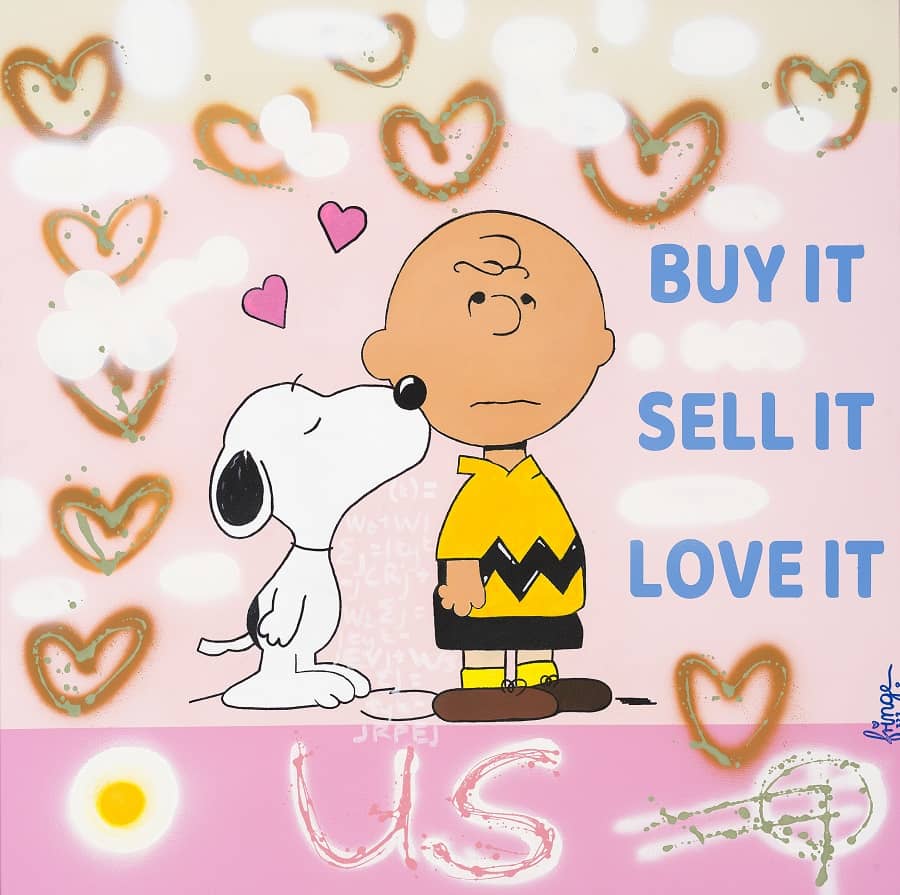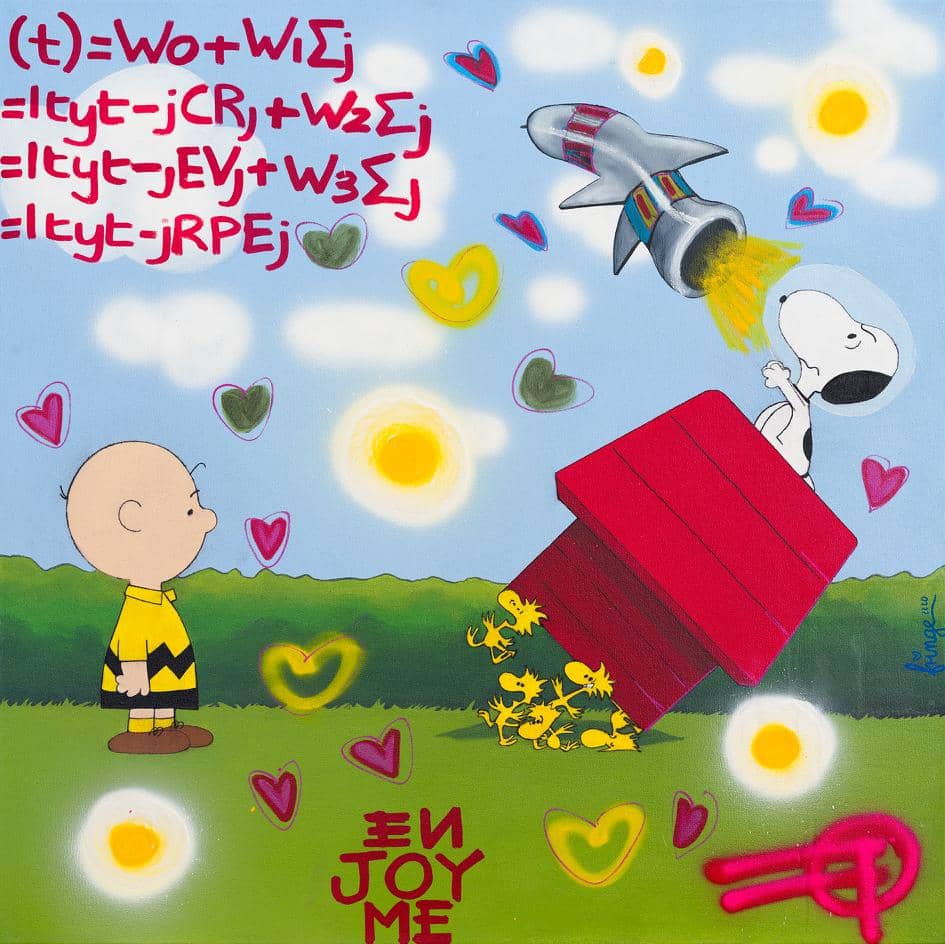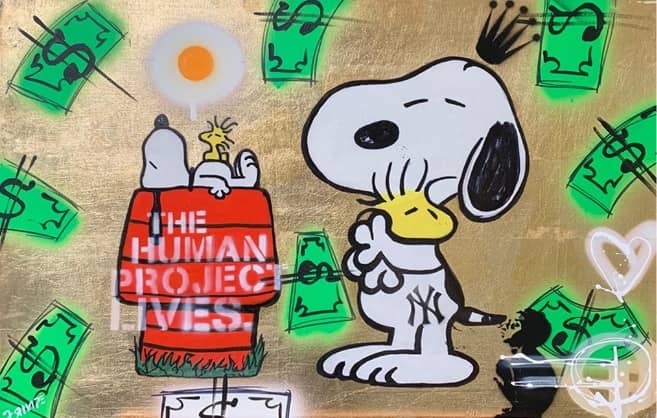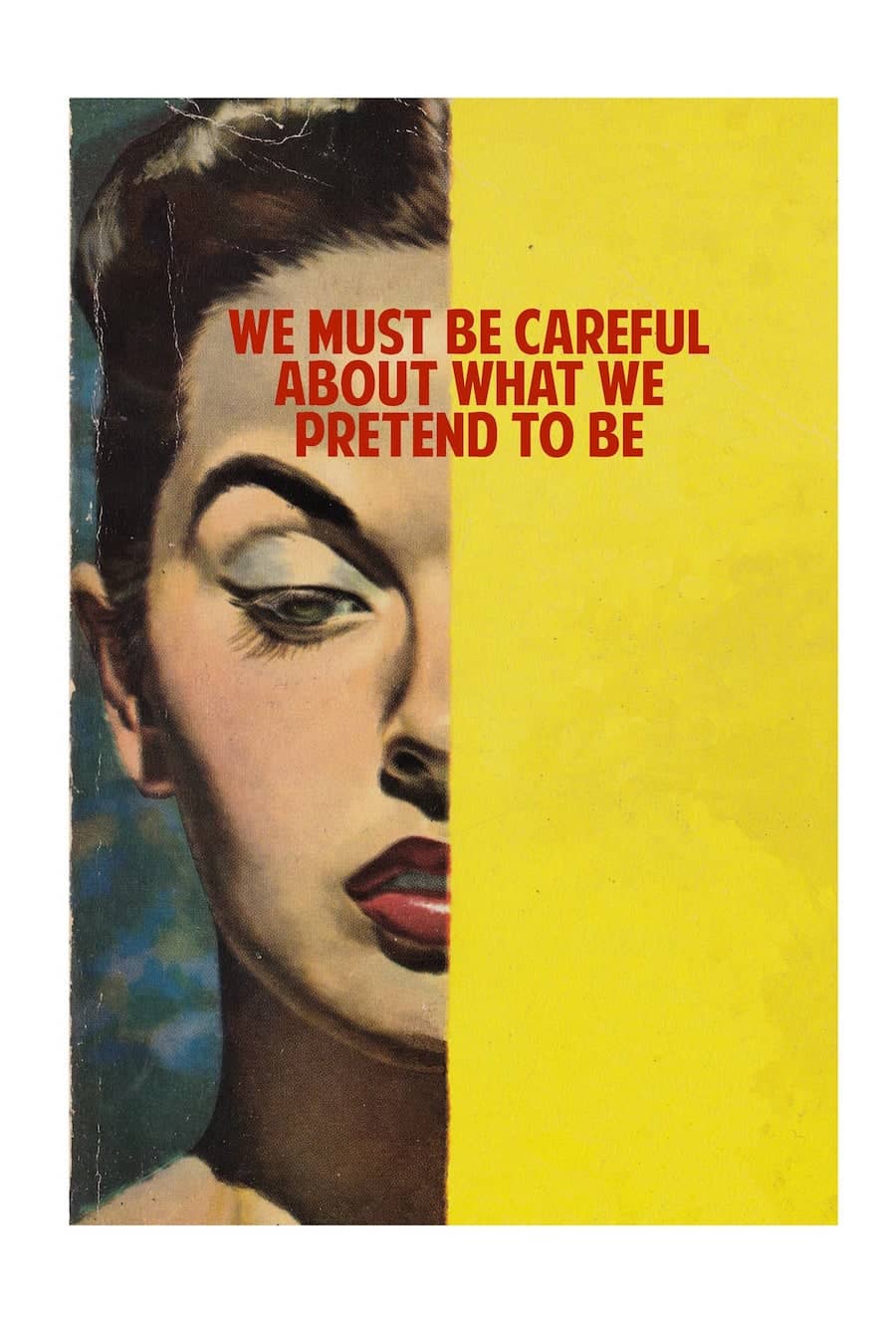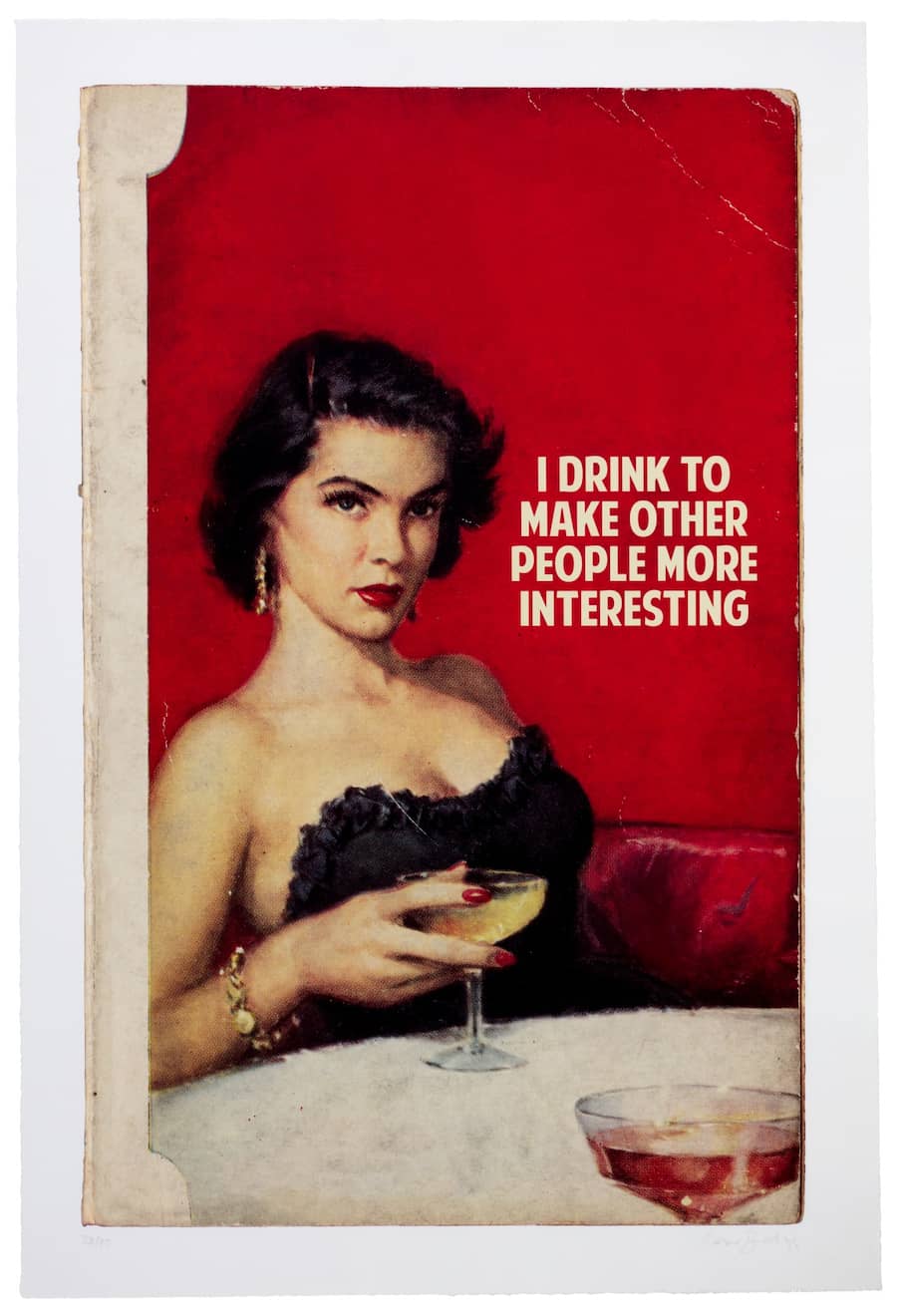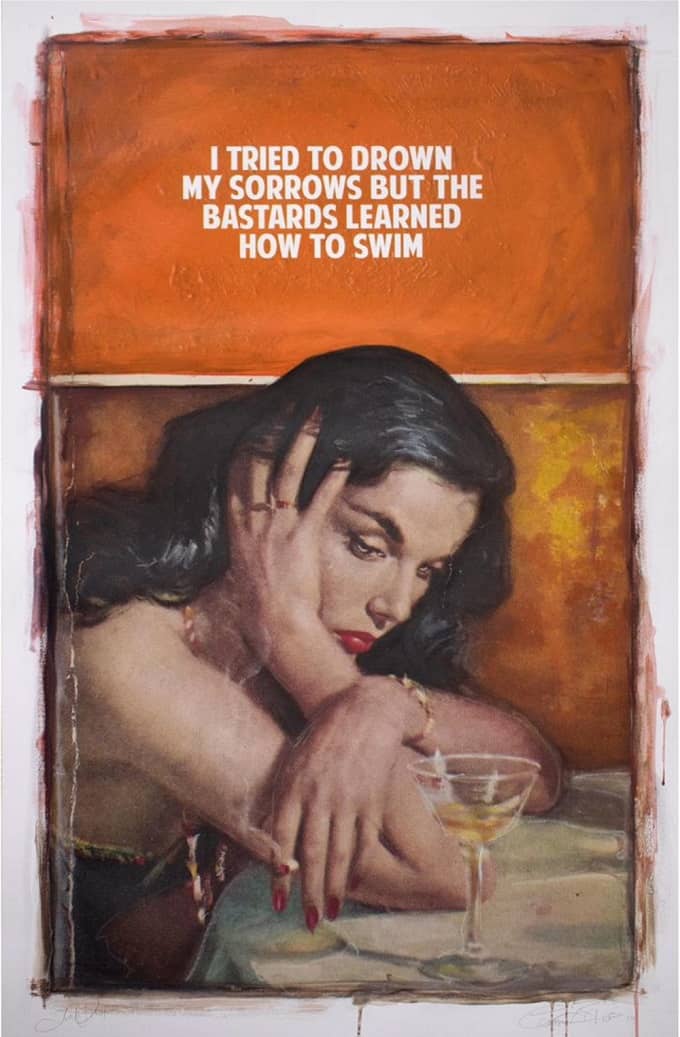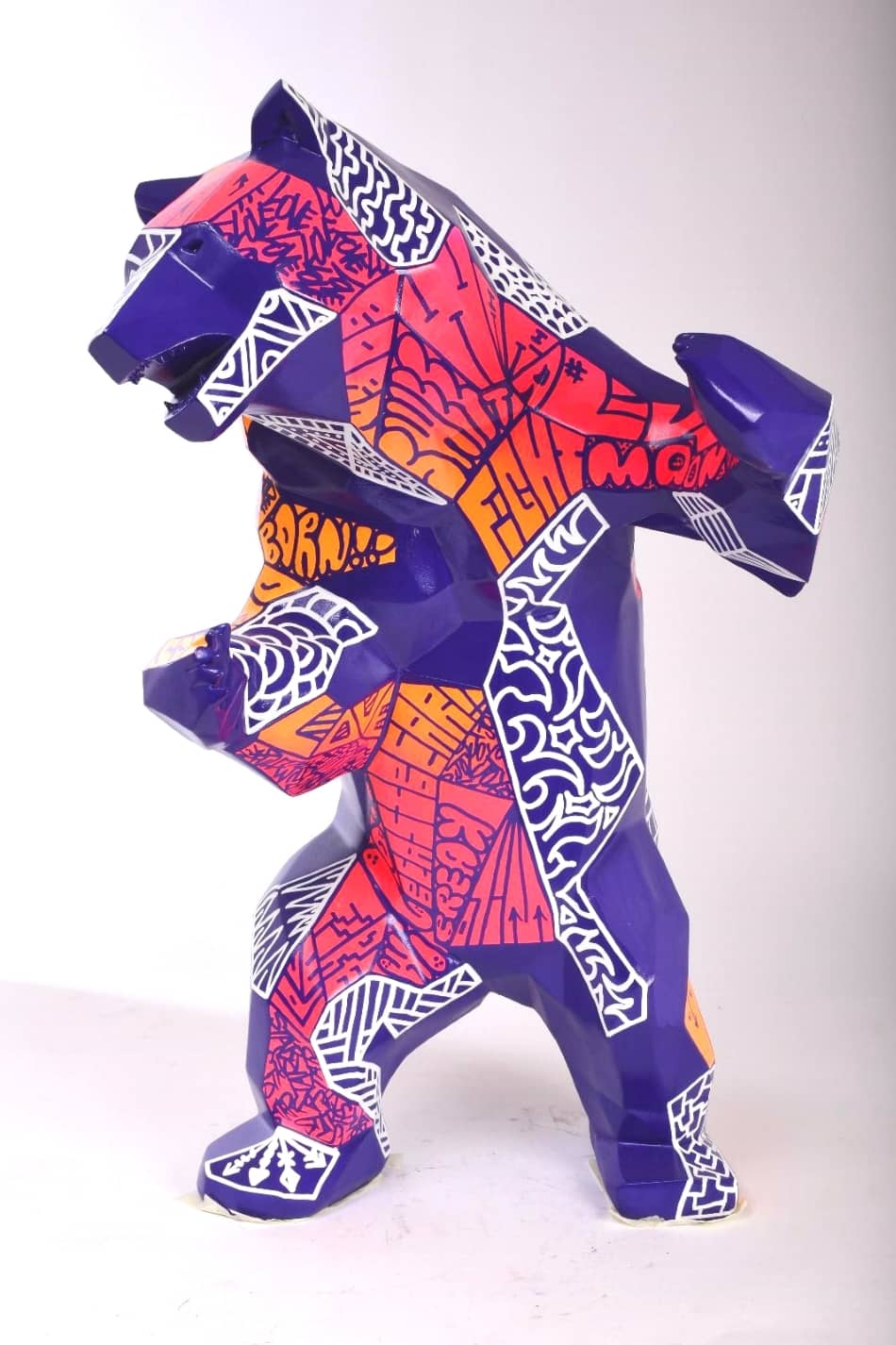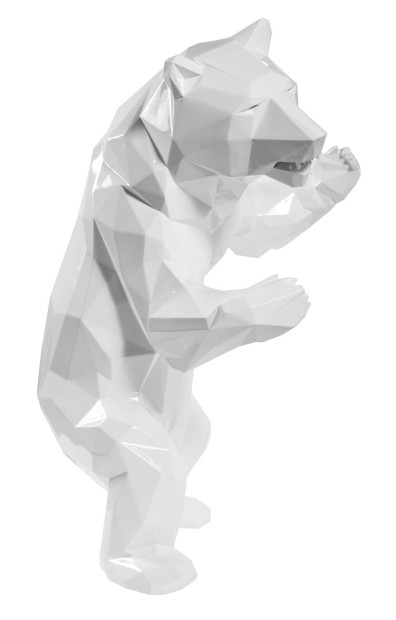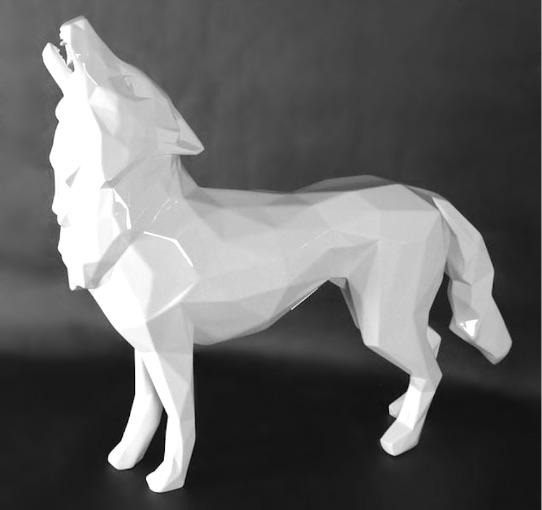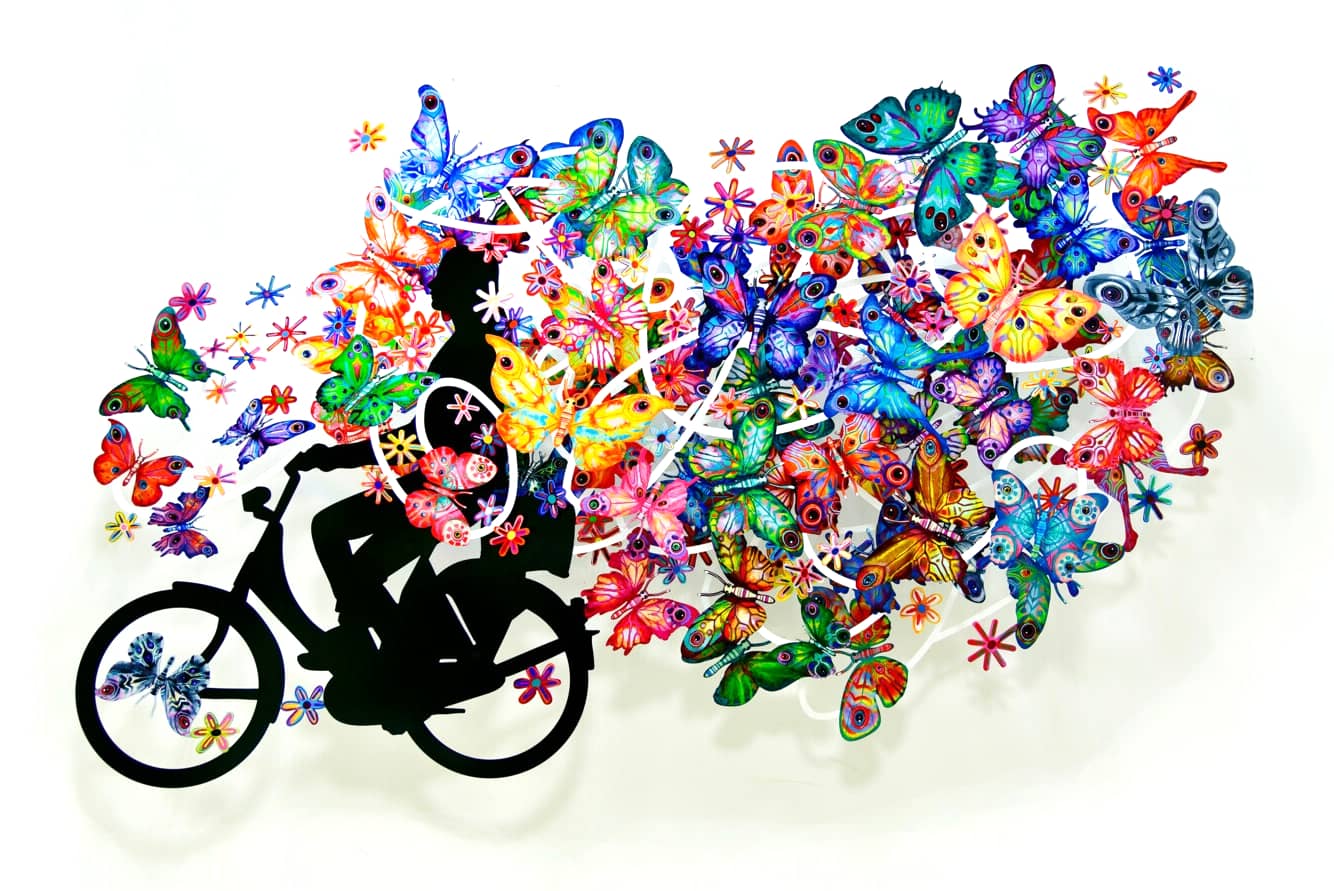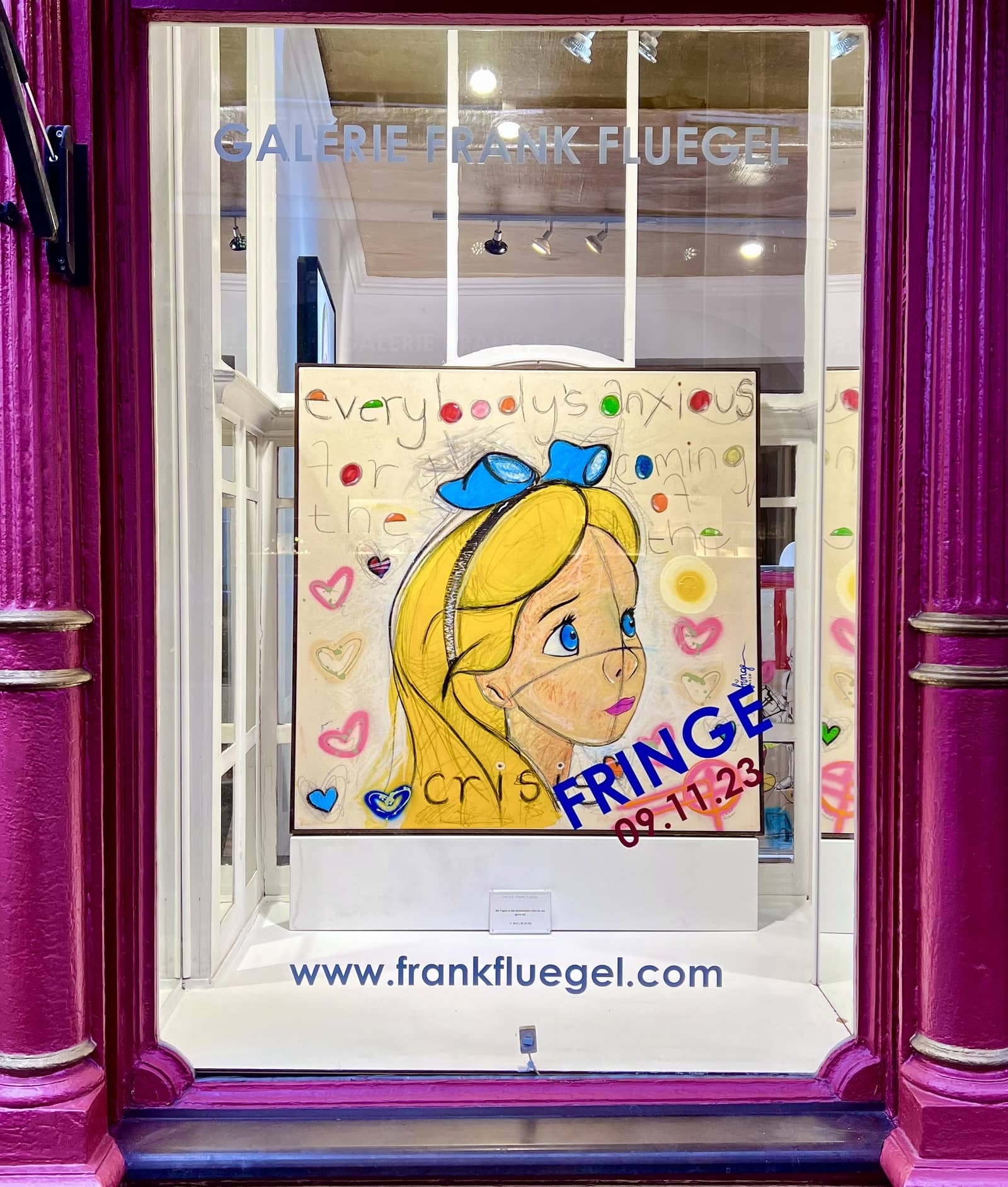Streetart is non-conformist and full of fantasy. Streetart surprises in the most unusual places, makes the walls of houses glow and brings the grey monotony of big cities like Berlin or New York to life: Street-Art has revolutionized the art scene. It transforms arbitrary objects in urban space into art that is to be taken seriously and has long been regarded as one of the most lively art forms of our time. In our international art gallery you will find selected works by renowned streetart artists such as Alec Monopoly, Kenny Scharf, BAMBI Street Artist, FRINGE, Mr. Brainwash, Richard Orlinski, Takashi Murakami and XOOOOX. Our focus is on original graphics, works on paper and unique canvas as well as sculptures. As befits Street-Art, many artworks are applied to found objects and objects made of wood, metal or stone. As the first gallery in Germany, we have Mr. Brainwash in our program since 2011. The street artist became known with the movie “Exit Through the Gift Shop” and is one of the most dazzling figures of the scene since his furious first exhibition in Los Angeles. Especially since the British artist Banksy with his “Girl with Balloon” celebrates successes all over the world and Streetart constantly breaks new records at auctions, Streetart is in the focus of international collectors.
The 21st century has witnessed an urban liberation of art media, moving beyond the conventional parameters of paper, cardboard, and canvas to sidewalks, walkways, subways, and the bricks of buildings. As an embodiment of movement, freedom, and spontaneity, graffiti-inspired art has taken center stage, both literally in scale and visibility and in its burgeoning popularity.
Works by artists such as Keith Haring, Jean-Michel Basquiat, Banksy, Invader, and Stik, to name a few, are in high demand today. Since Shepard Fairey’s iconic “Hope” poster in 2008 and the groundbreaking exhibition on the international history of graffiti and street art at the MoCA Museum in Los Angeles in 2011, titled “Art in the Streets,” the popularity of street art has skyrocketed. The street art exhibition was curated by MOCA Director Jeffrey Deitch and Associate Curators Roger Gastman and Aaron Rose. It traced the evolution of graffiti and street art from the 1970s to the global movement it has become today, focusing on key cities such as New York, Los Angeles, San Francisco, London and Sao Paulo, where a unique visual language or attitude has developed. The exhibition featured paintings, mixed media sculptures and interactive installations by 50 of the most dynamic artists.
In November 2023 FRANK FLUEGEL GALERIE showed the street art exhibition Fringe the Artist “In the best of all possible worlds” in the gallery space in Nuremberg.
Street-Art is actually always characterized by the lush use of spray paint and of course stencils. On the street, the actual origin of graffiti and Streetart, the attachment of artwork is still illegal. Therefore, it must go quickly for the artists. Stencils and sprays are ideal for this. The stencil thus became the feature of Street-Art because it is the most commonly used technique of graffiti art. For the galleries, this technique is usually transferred as mixed media unique pieces on transportable substrates such as paper, wood or corten steel.
The Evolution and Origins of Street Art: A Cultural Revolution.
Street art has emerged as a dynamic and influential form of artistic expression, captivating the attention of urban landscapes and captivating viewers with its thought-provoking messages. However, to truly appreciate the significance of street art, it is essential to delve into its origins, tracing its evolution from its humble beginnings to its current status as a catalyst for social change and creative activism.
Street art finds its roots in various artistic movements and cultural phenomena that shaped its development over time. The origins of street art can be traced back to the graffiti subculture that emerged in the late 1960s and early 1970s in urban centers like New York City and Philadelphia. This subculture provided a platform for marginalized communities, predominantly African-American and Latino youths, to express their identities, experiences, and frustrations through visually striking and politically charged tags and murals.
Initially viewed as a form of vandalism, street art gradually gained recognition as a legitimate artistic medium. Artists like Jean-Michel Basquiat and Keith Haring played pivotal roles in the transformation of street art from an underground movement to a recognized art form. Their works incorporated elements of graffiti, pop art, and social commentary, elevating the medium’s status and inspiring a new generation of artists to push the boundaries of artistic expression in public spaces.
One of the significant turning points in street art’s evolution was the emergence of stencil art as a popular technique. Stencil art allowed artists to create intricate and detailed works quickly, while retaining a level of anonymity. The enigmatic British artist known as Banksy became synonymous with stencil art and gained global recognition for his politically charged and often satirical murals. Banksy’s anonymity and ability to address social and political issues through his art contributed to the mainstream acceptance and appreciation of street art as a powerful medium for social commentary.
Speculation about Banksy’s identity has been going on for years.
Street art artists are usually anonymous. The simple reason for this is that the spraying of house walls, whether art or not, is still prosecuted as damage to property in most countries. This is why almost all street artists work under a pseudonym. The most famous of them, Banksy, has had collectors around the world speculating for years about who might be behind it. 20 years ago, the BBC conducted an interview with Banksy, which resurfaced in 2023. In it, Banksy gives his first name as “Robbie”.
In the interview from 2003, the interviewer asks the artist if he can use his name. Banksy says yes, whereupon the presenter asks him: “Is it Robert Banks?”. Answer: “It’s Robbie.”
But what does the abbreviation Robbie stand for? Is it Robert, like Robbie Williams? For Robin? The artist Robin Gunningham, who many have thought to be Banksy for years, used the name Robin Banks for a while, reported “Bristol Live” from Banksy’s home town in the west of England. However, the portal emphasized that Robbie could also refer to other identities, such as Robert Del Naja, artist and member of the band Massive Attack, who hails from Bristol. Del Naja has also been traded as a possible Banksy for years.
The interview was conducted by the BBC’s cultural correspondent at the time, Nigel Wrench. When the BBC published the podcast “The Banksy Story”, Wrench remembered the interview. He found his complete interview at home on a minidisc – and the BBC added an episode to its podcast, which had actually already ended.
Street art has transcended its artistic origins to become a powerful tool for social commentary and activism. Artists around the world utilize public spaces to challenge societal norms, raise awareness about social issues, and give voice to marginalized communities. Murals and installations tackling topics such as inequality, racism, climate change, and human rights have sparked conversations and ignited collective action. Street art’s ability to engage with diverse audiences and its potential to disrupt the urban landscape make it an influential force in shaping public discourse.
Today, street art has become a global phenomenon, with artists from all corners of the world leaving their mark on city walls. Each region and culture infuses its unique aesthetic and thematic elements into the street art movement, fostering a sense of cultural exchange and appreciation. Festivals and events dedicated to street art, such as the renowned Art Basel Miami Beach and the annual Upfest in Bristol, showcase the breadth and diversity of artistic talent, further solidifying street art’s place in the contemporary art world.
Street art has come a long way since its humble beginnings as an act of rebellion. It has evolved into a multidimensional art form that challenges societal norms, provokes dialogue, and inspires change. By merging artistic talent with social consciousness, street artists continue to transform the urban landscape, engaging with communities and shaping our collective understanding of art and its impact. As we witness the ongoing evolution of street art, it is clear that its power to captivate, provoke, and unite will continue to shape our cultural landscape for years to come.
In 2019, Christie’s auction house sold prints by Stik and Banksy – including “Girl with Balloon,” which set new world records for the artists at auction.
Since their appearance on the market, street art has grown unceasingly, both in terms of supply and demand. New markets such as Hong Kong or even the whole of Asia are gradually replacing the traditionally strong European and American markets, reinforcing this trend. The number of artists is also steadily increasing. If Banksy is the only living urban artist today with a turnover of over a million, it would not be surprising if artists like Kaws, Invader or Barry McGee would join him in this closed club of millionaire artists.
With digital token-based NFT art, another rebellious branch of art has recently emerged. Street art and crypto art have more in common than one might think at first glance. Both cultures are DIY (do it yourself) and rebellious by nature. Both have adopted a set of in-group terms and shibboleths that are gradually being adopted by the mainstream.
And both are challenging the boundaries of what counts as art – whether it’s Basquiat painting on found doors, Banksy making artful stencil work in anonymity, Lushsux incorporating meme culture into his murals, Beeple turning his dogged and thankless years of daily creation into a highly regarded sales record, or the creators of the earliest incarnations of NFT technology acting on the belief that digital scarcity is possible.
Now street artists and muralists are finding new ways to bridge the gap between their practice and the current possibilities of NFT technology. As such, street art is certainly the most interesting and promising art sector for collectors to invest in at the moment.
Rafael Schacter, author of The World Atlas of Street Art and Graffiti, is a proponent of public art, but worries that much of the work being created today is superficial. Street art festivals such as Pow! Wow! in Washington, D.C., or HKWalls, which have left murals in some of Hong Kong’s ritziest neighborhoods, add what Schacter calls an air of edgy cool to an area almost overnight. “Murals can change the perception of a space, but they are too often used simply as a means to cheaply transform a space for the benefit of a few,” he says.
The Wynwood Walls in Miami have now become a gigantic tourist hot spot, attracting thousands of visitors to the district every year.
Today’s street art is a far cry from the independent, often illegal medium of the ’80s and ’90s that made Banksy a household name. Graffiti tagging hasn’t disappeared, but increasingly hefty fines have made many think twice before pulling out a spray can. And the more elaborate, building-sized murals that are making a splash these days tend to be funded by big brands, city-approved public works projects or developers hoping to capitalize on the cultural zeitgeist.
Mr. Brainwash also creates huge murals every year in New York, London or Los Angeles, some of which are temporary, but often remain permanently on facades. Owning an original one-of-a-kind piece by one of the street artists in one’s own walls has therefore become a major goal for many young people today. For years, rising prices for the artists are the inevitable result, but this is also quite desired by the collector.


